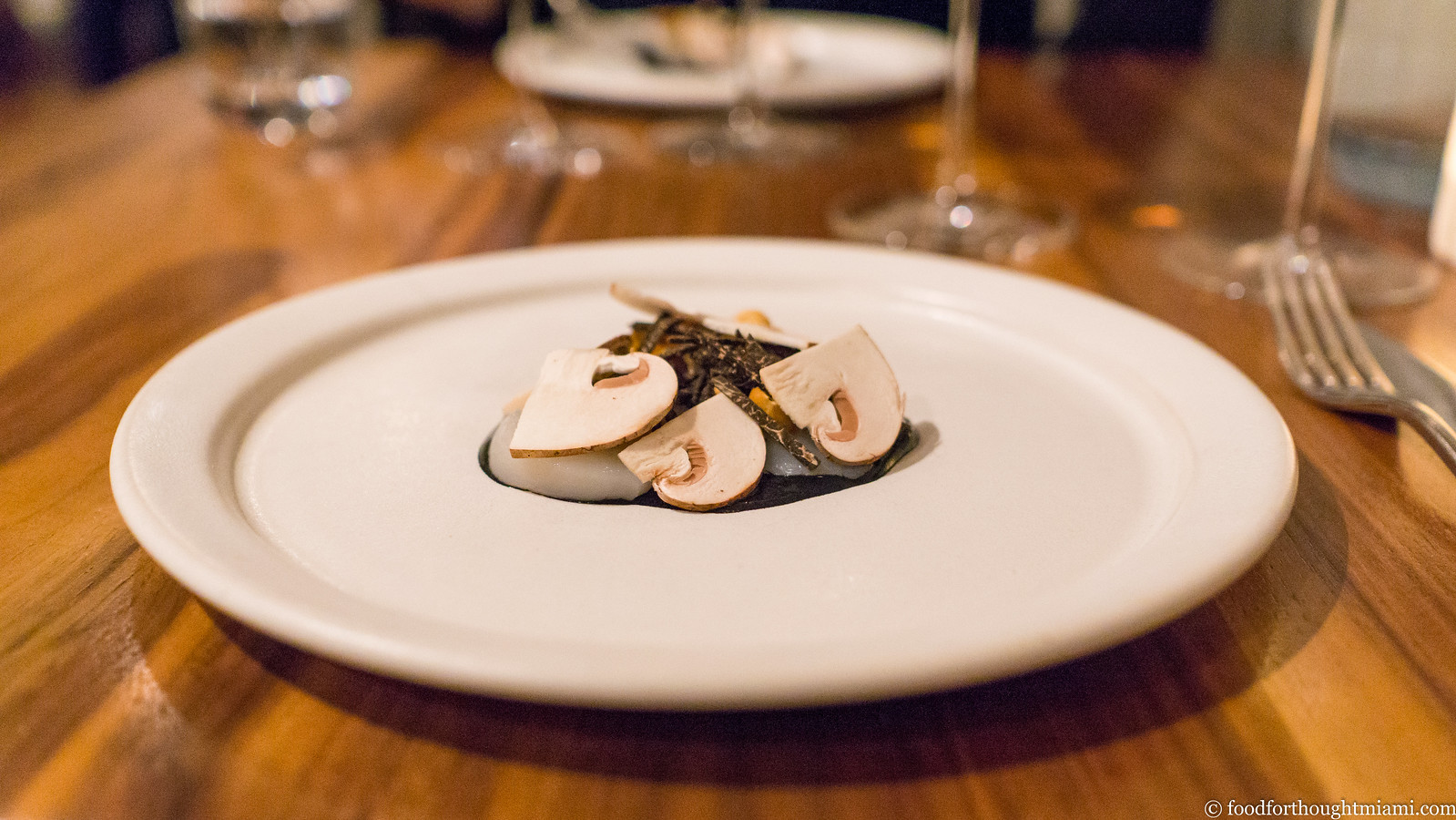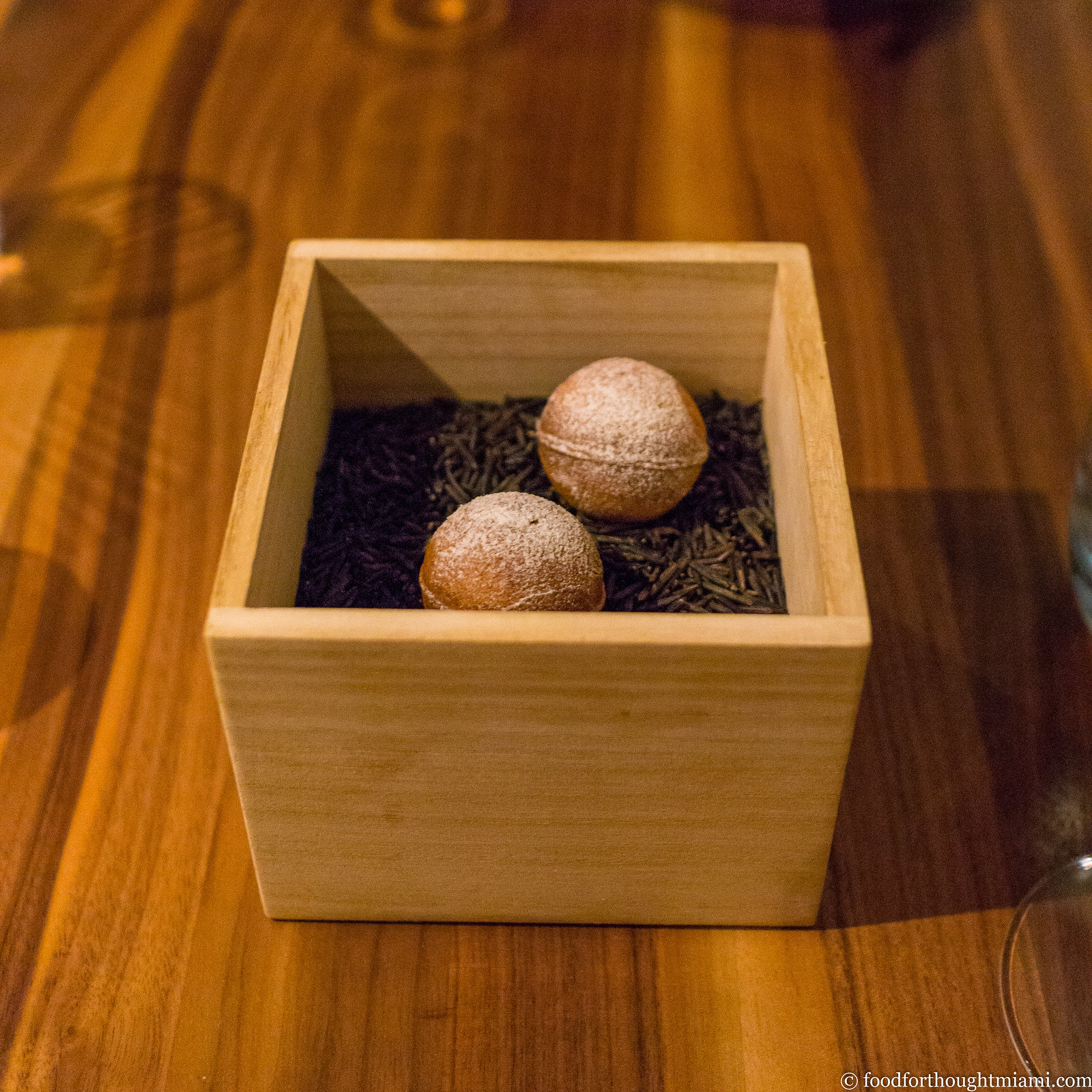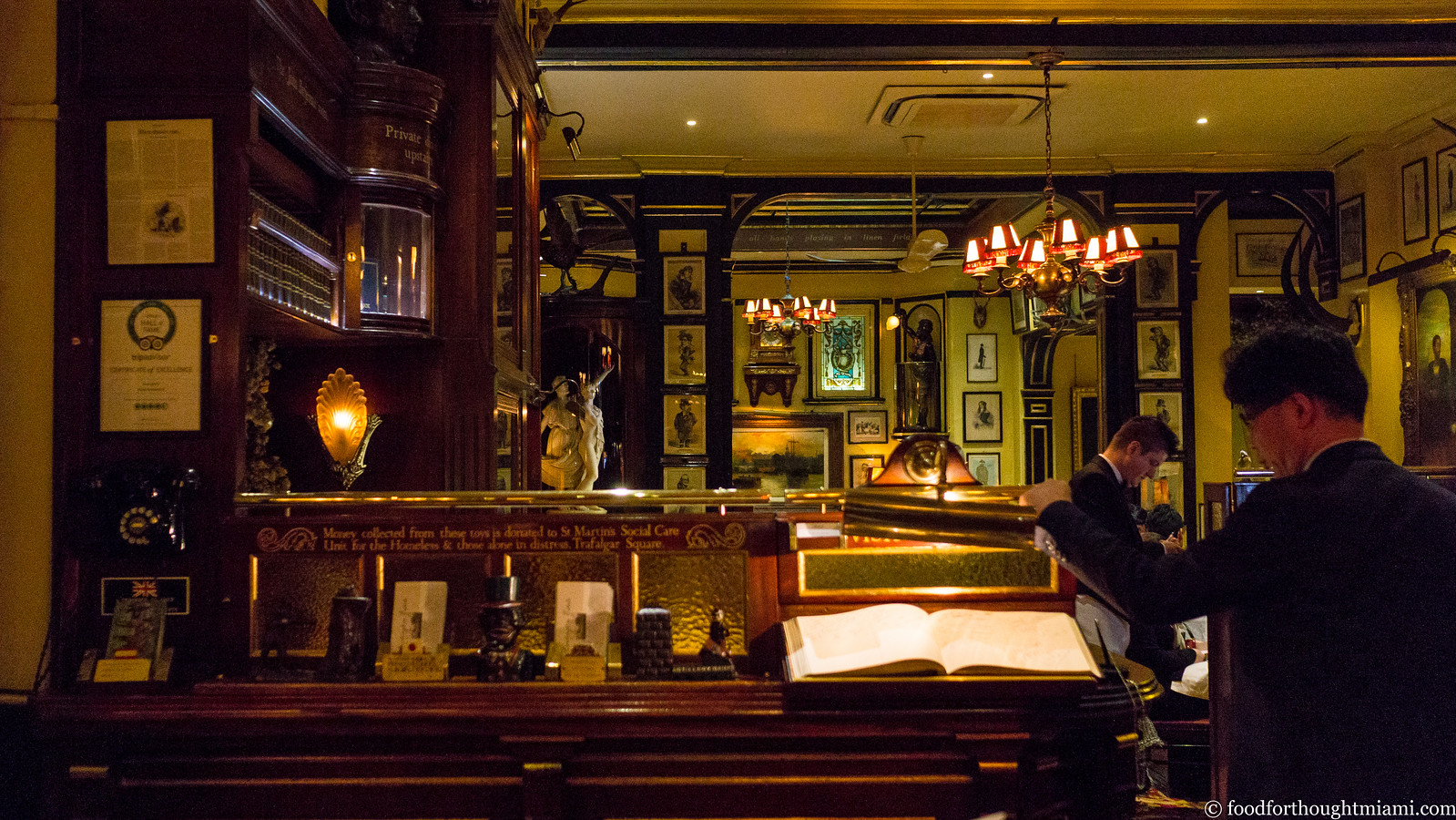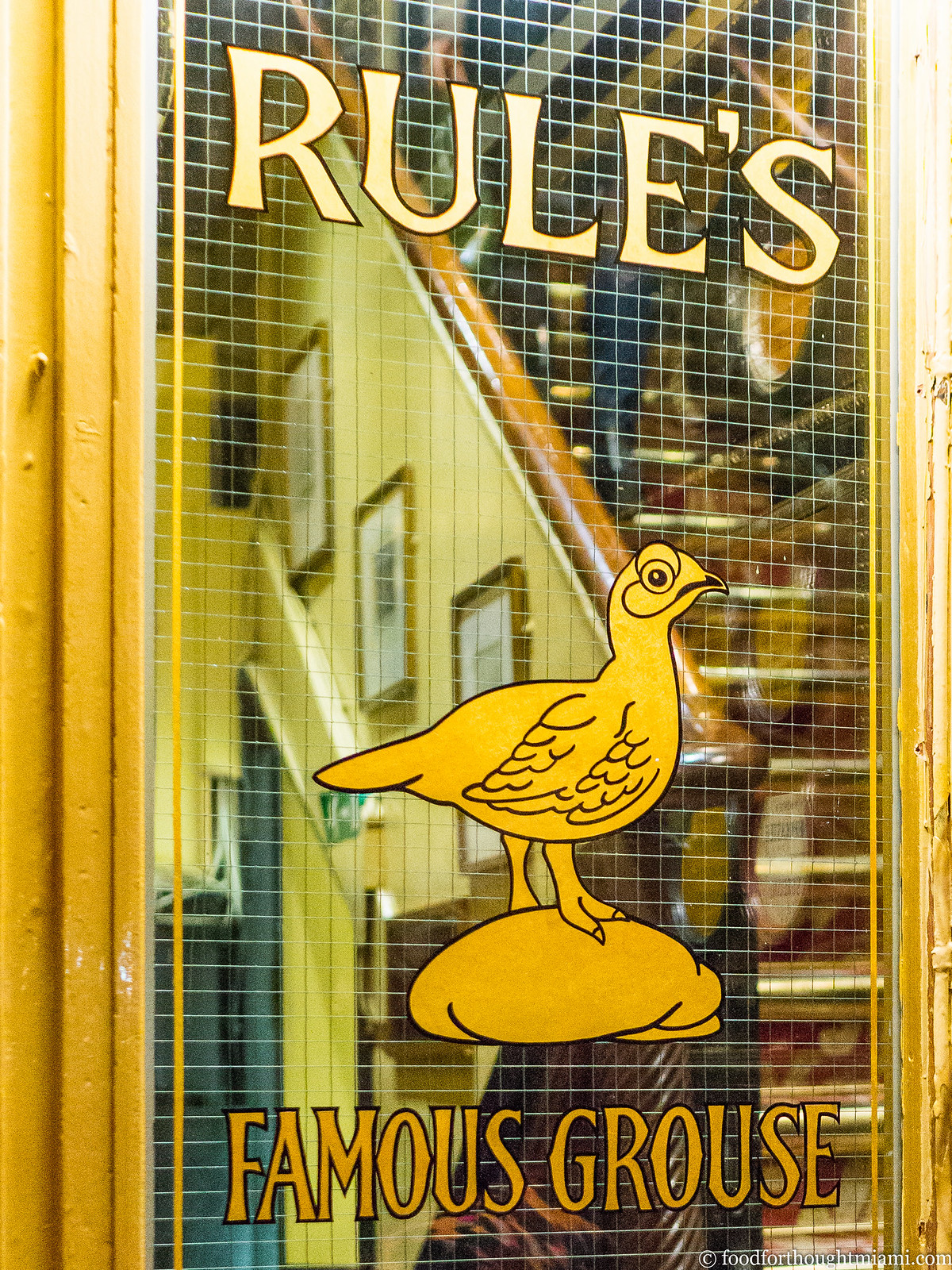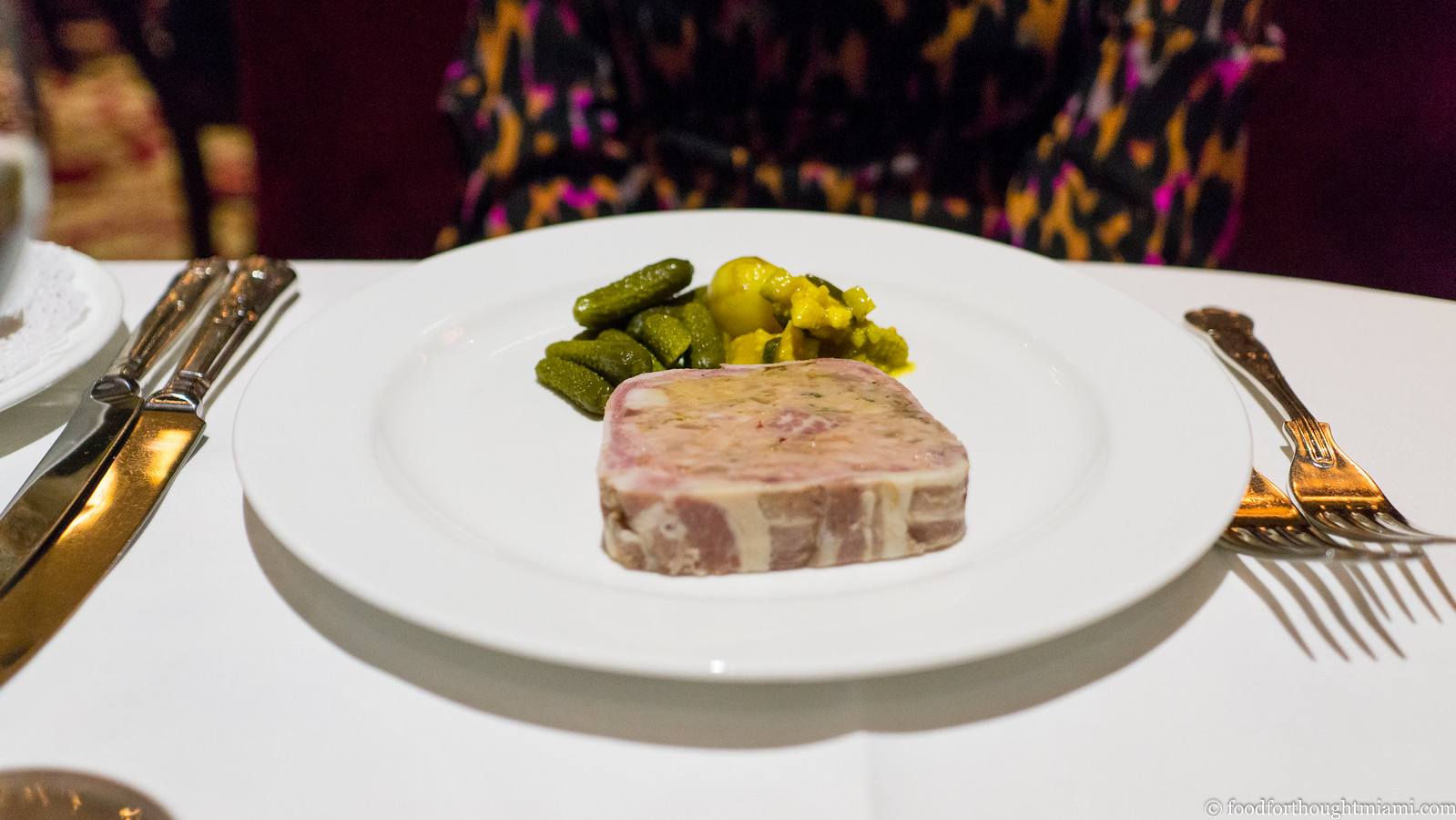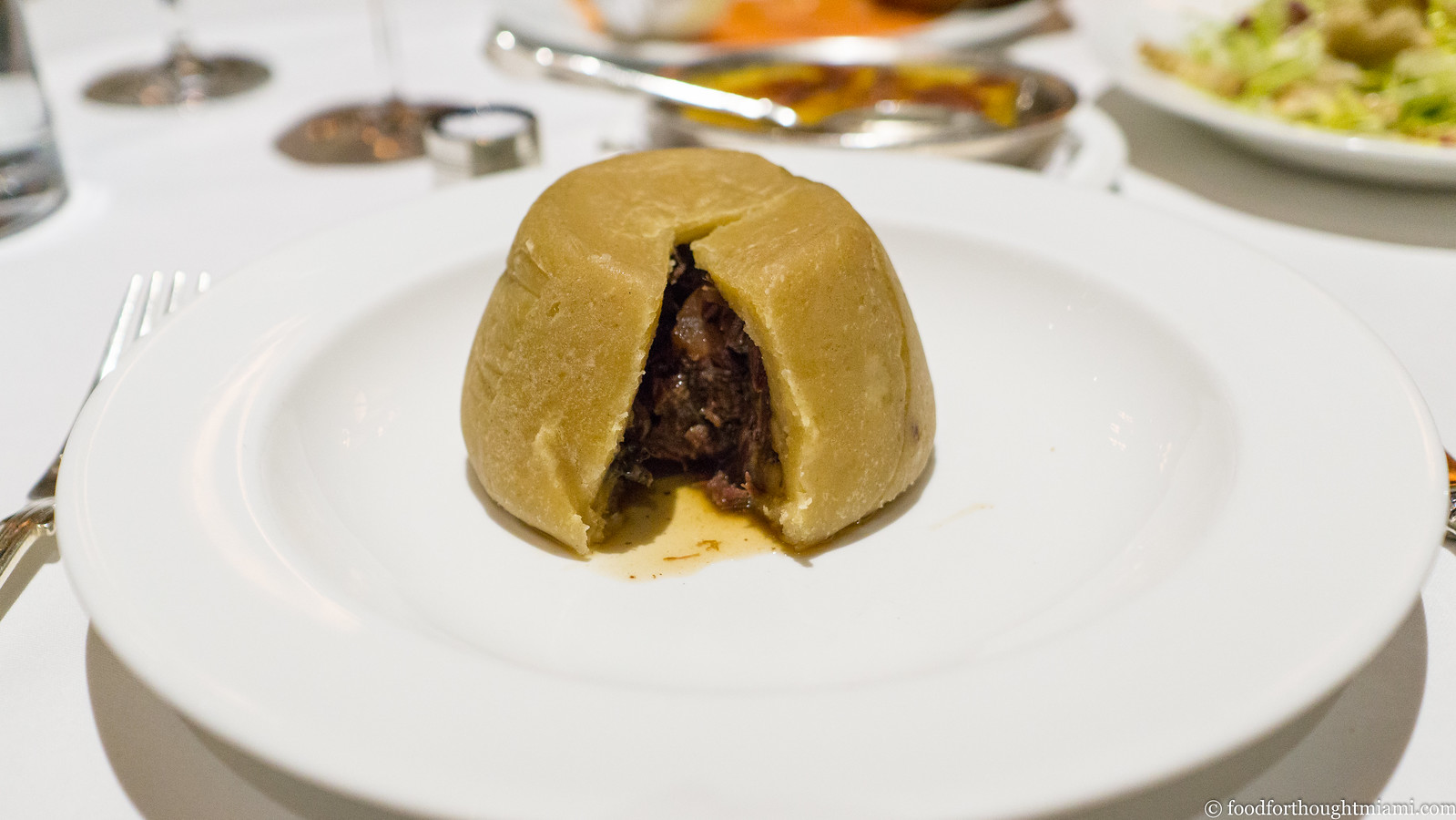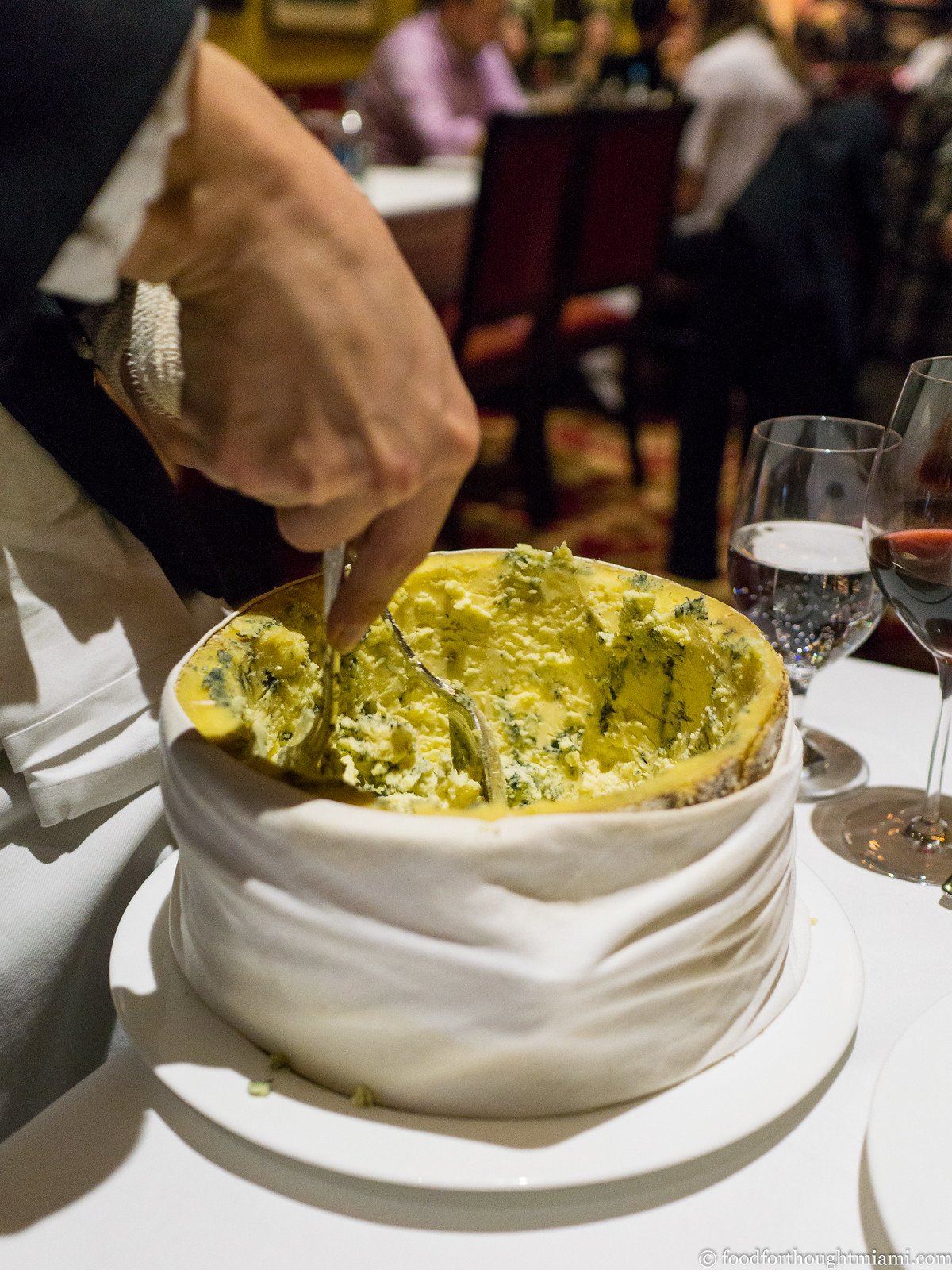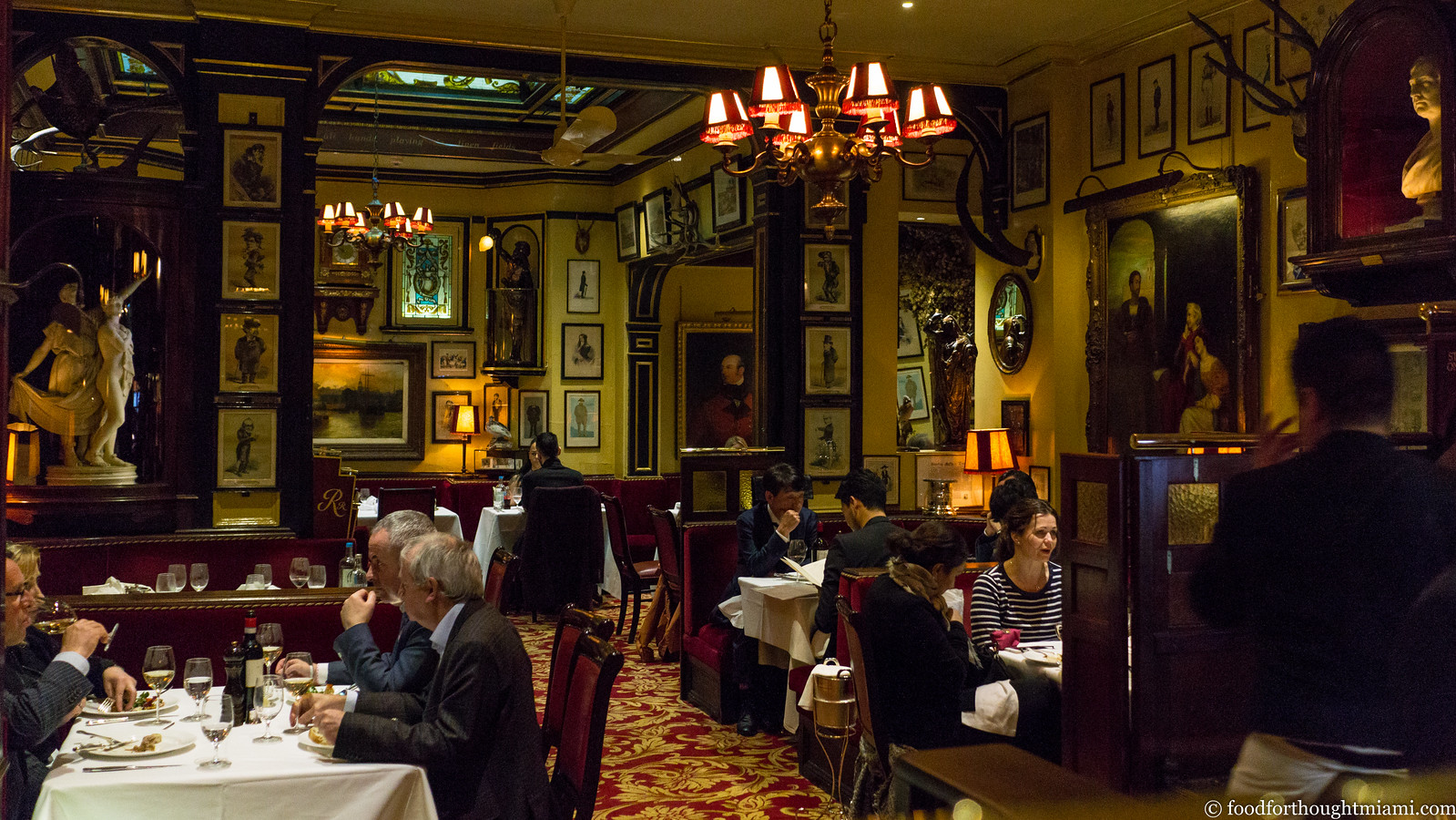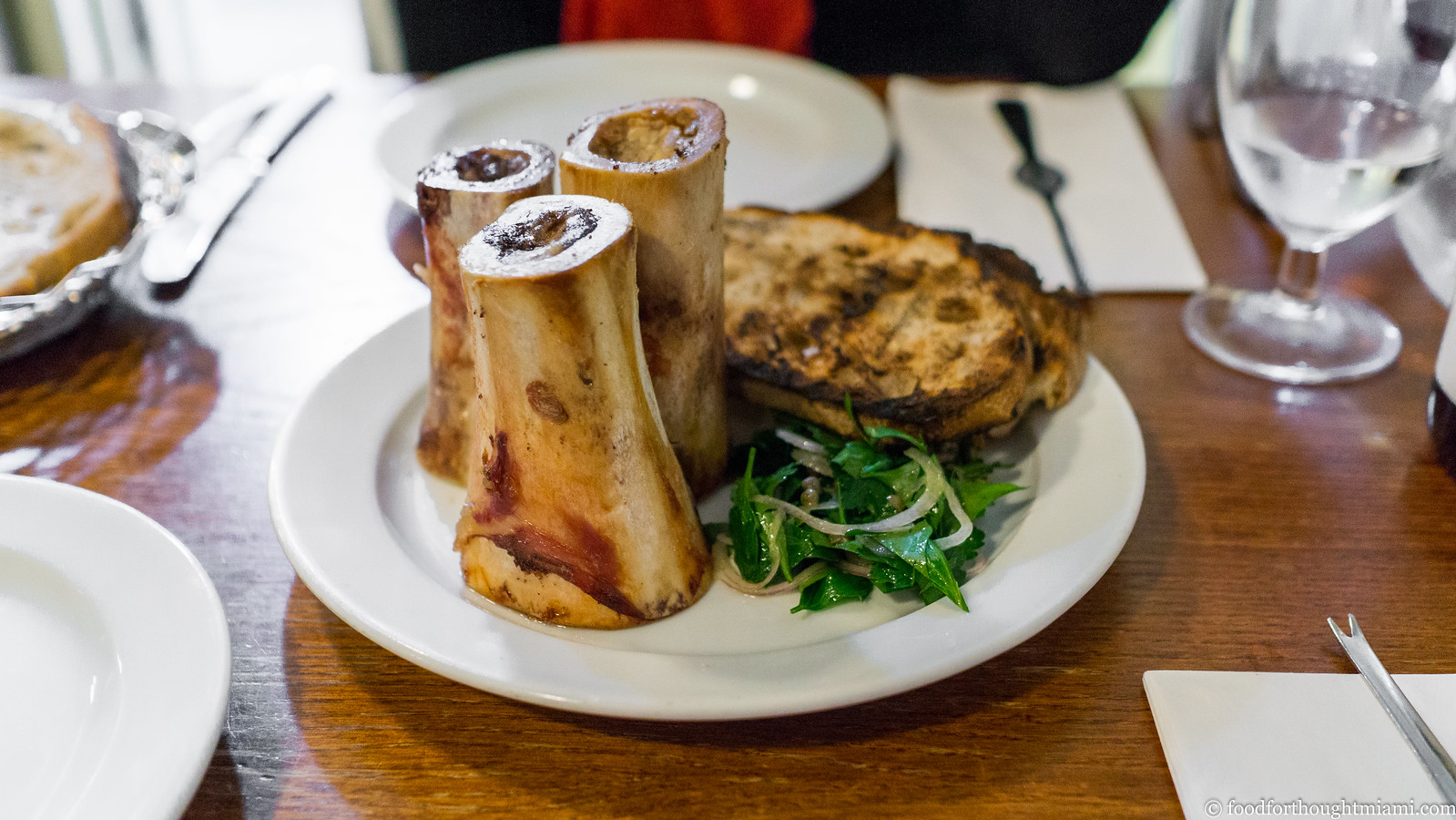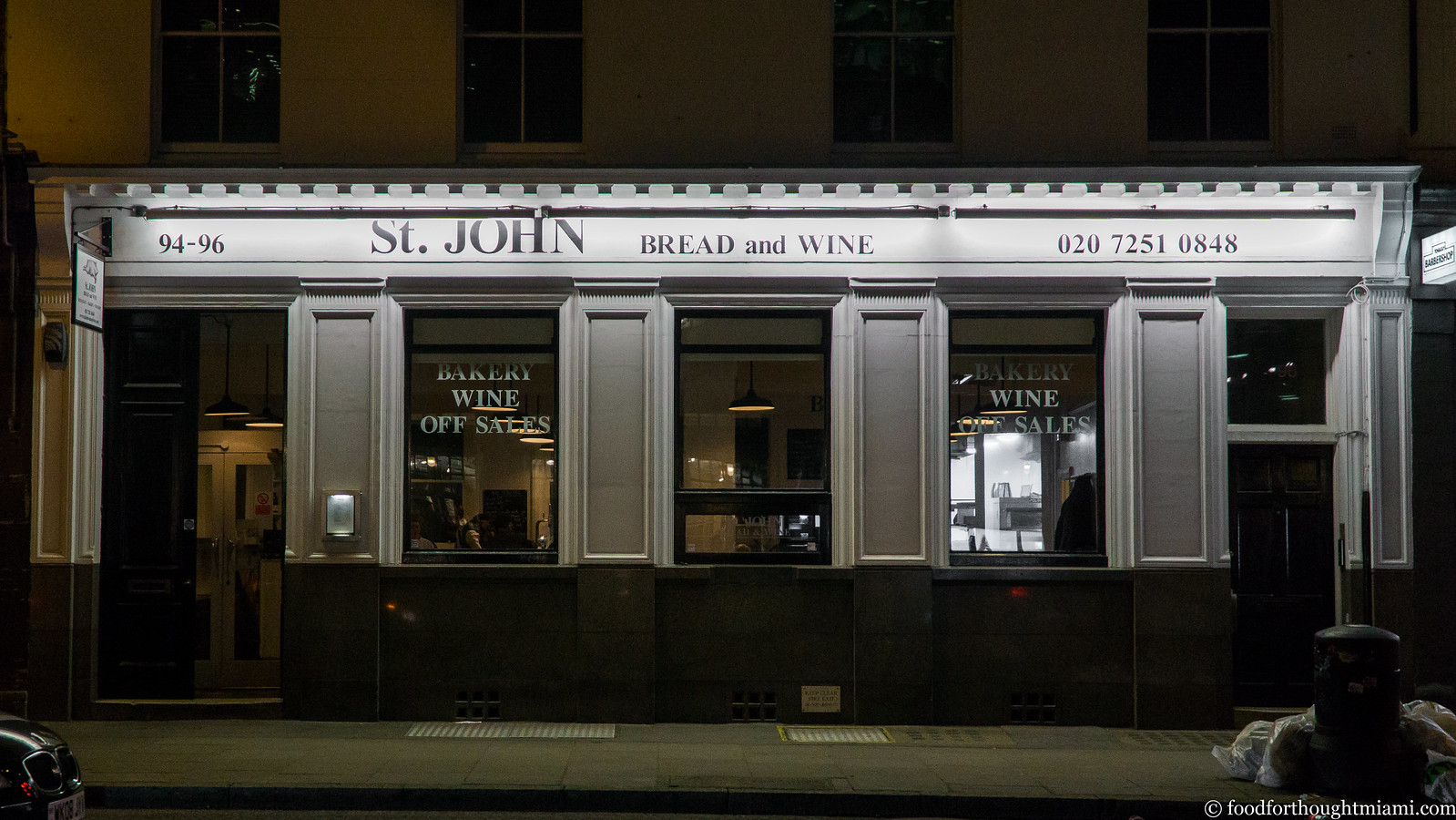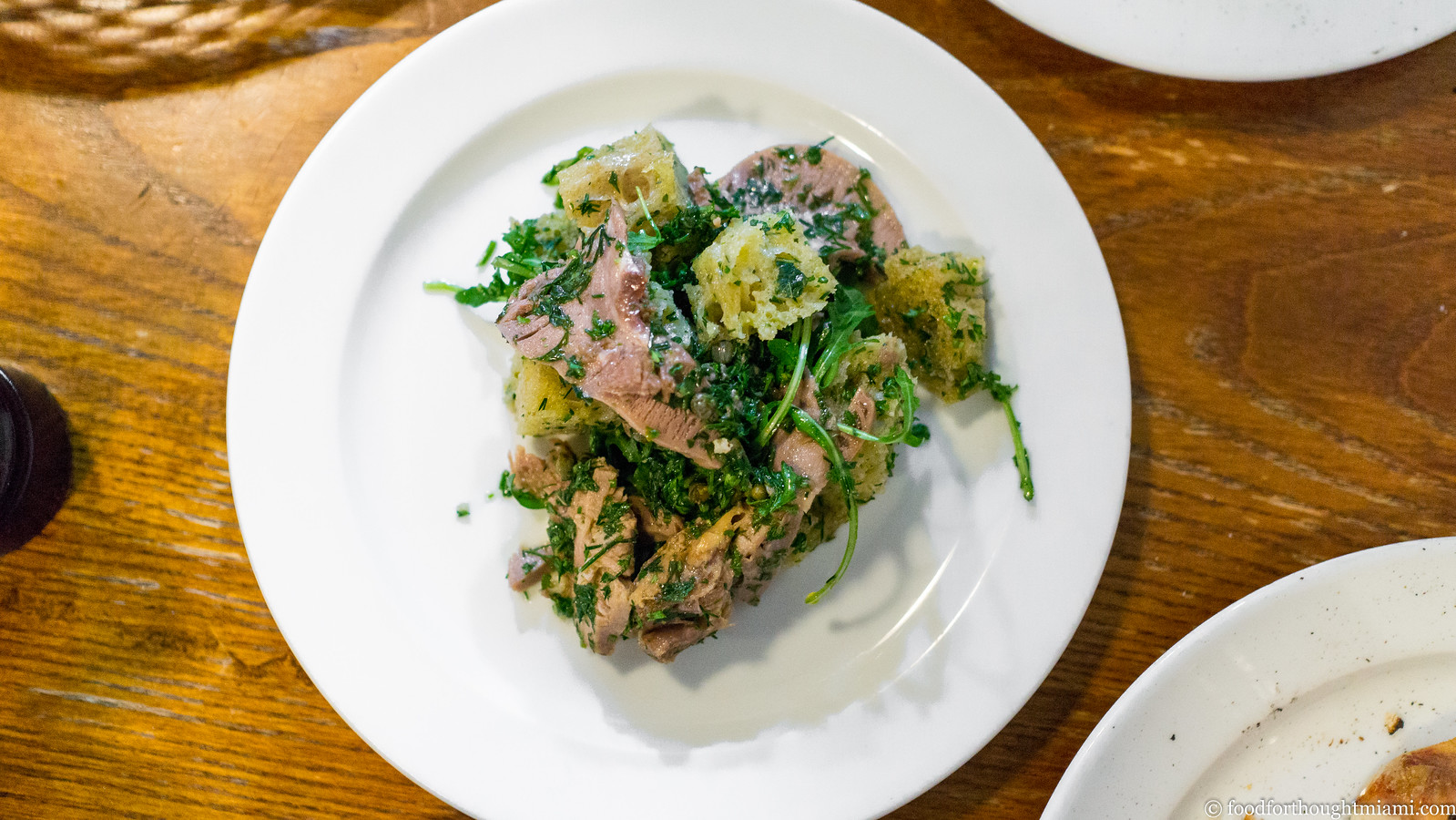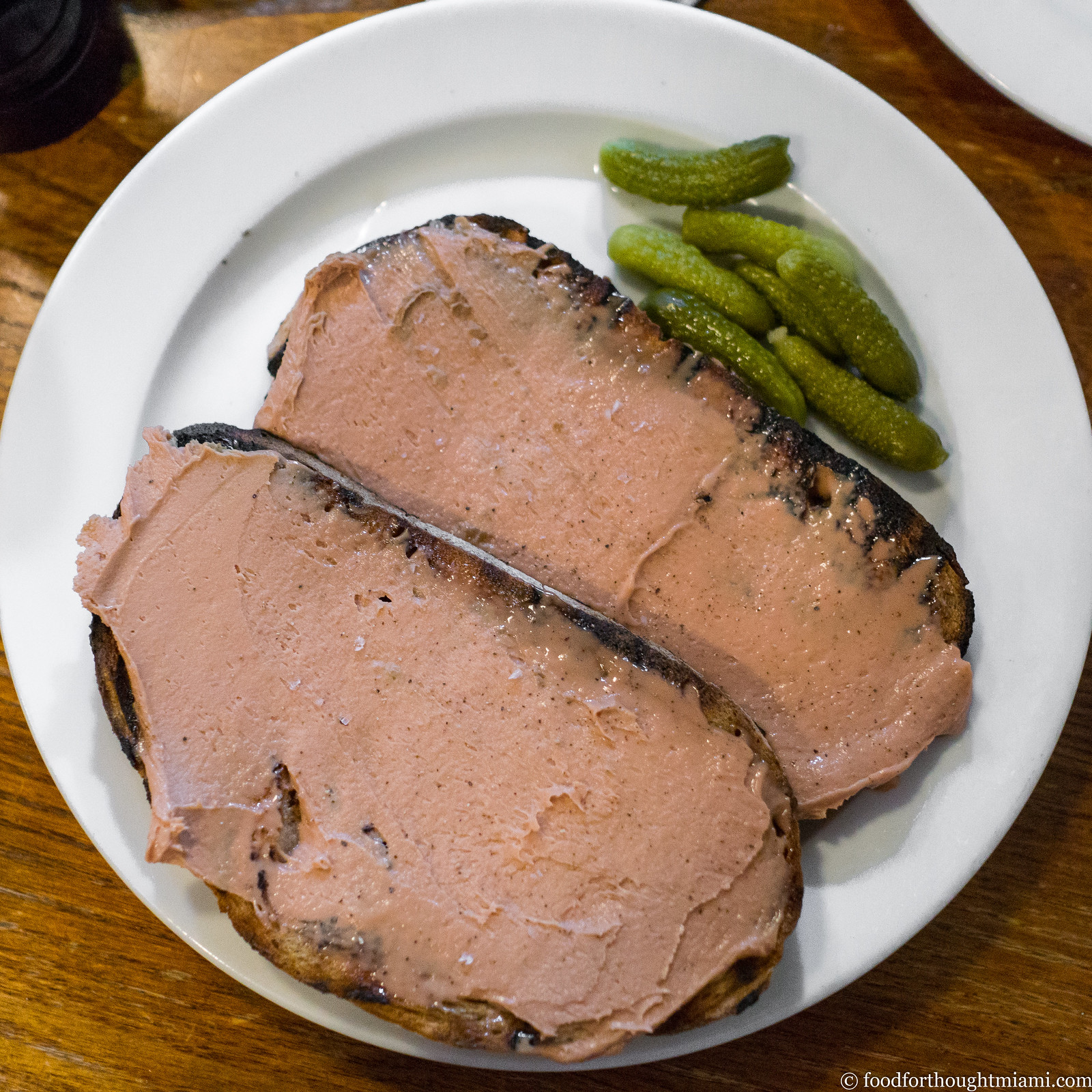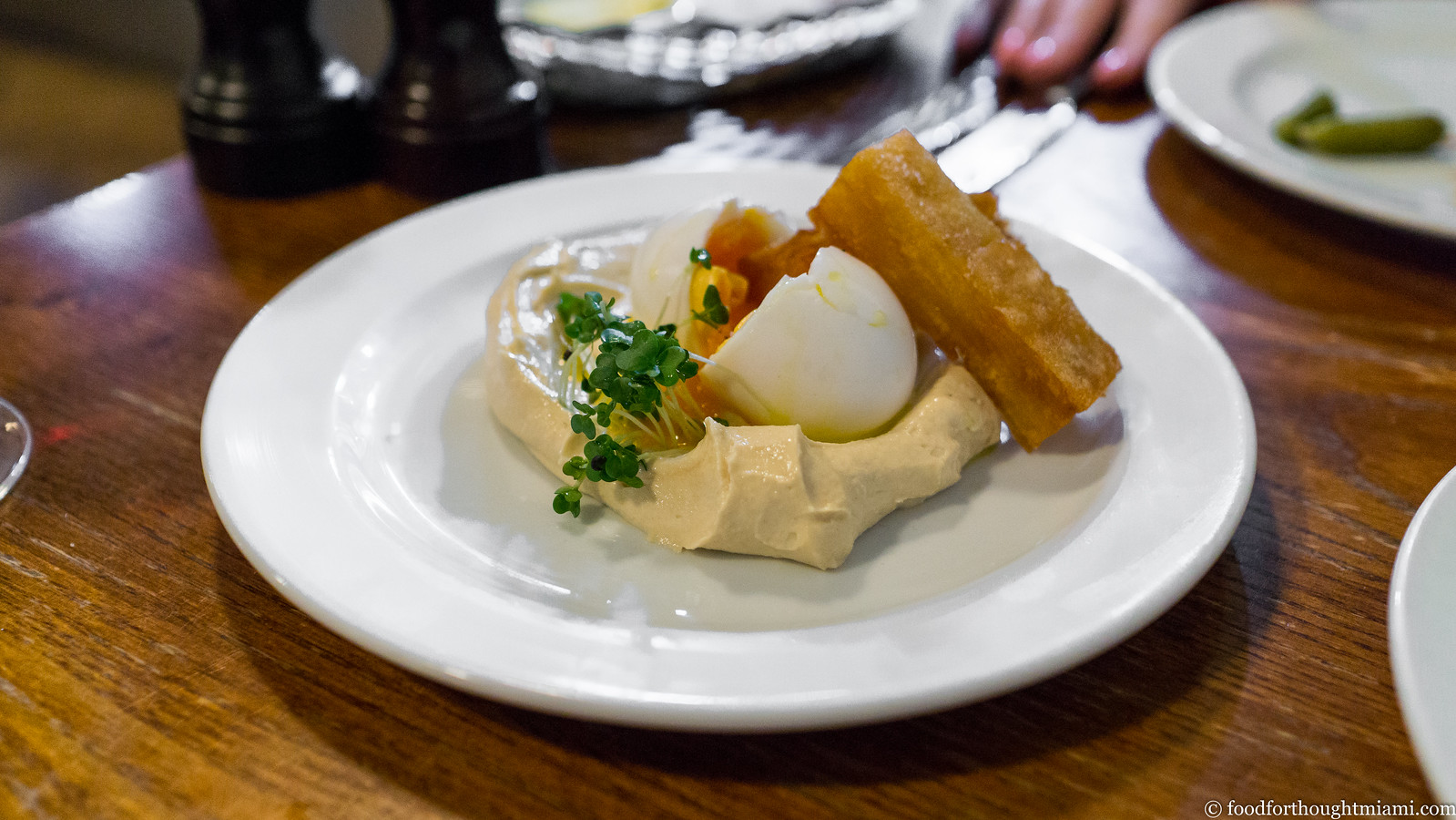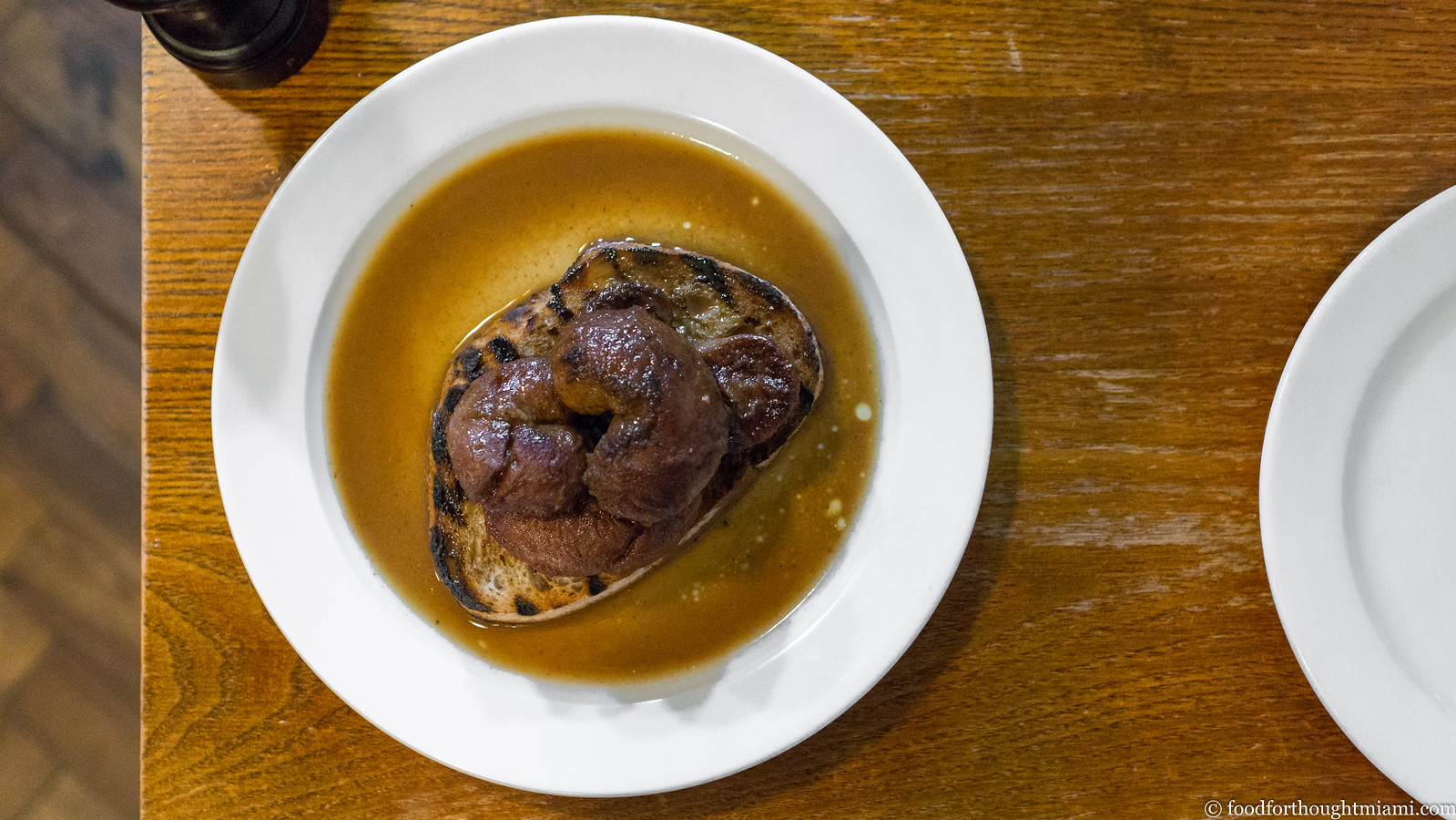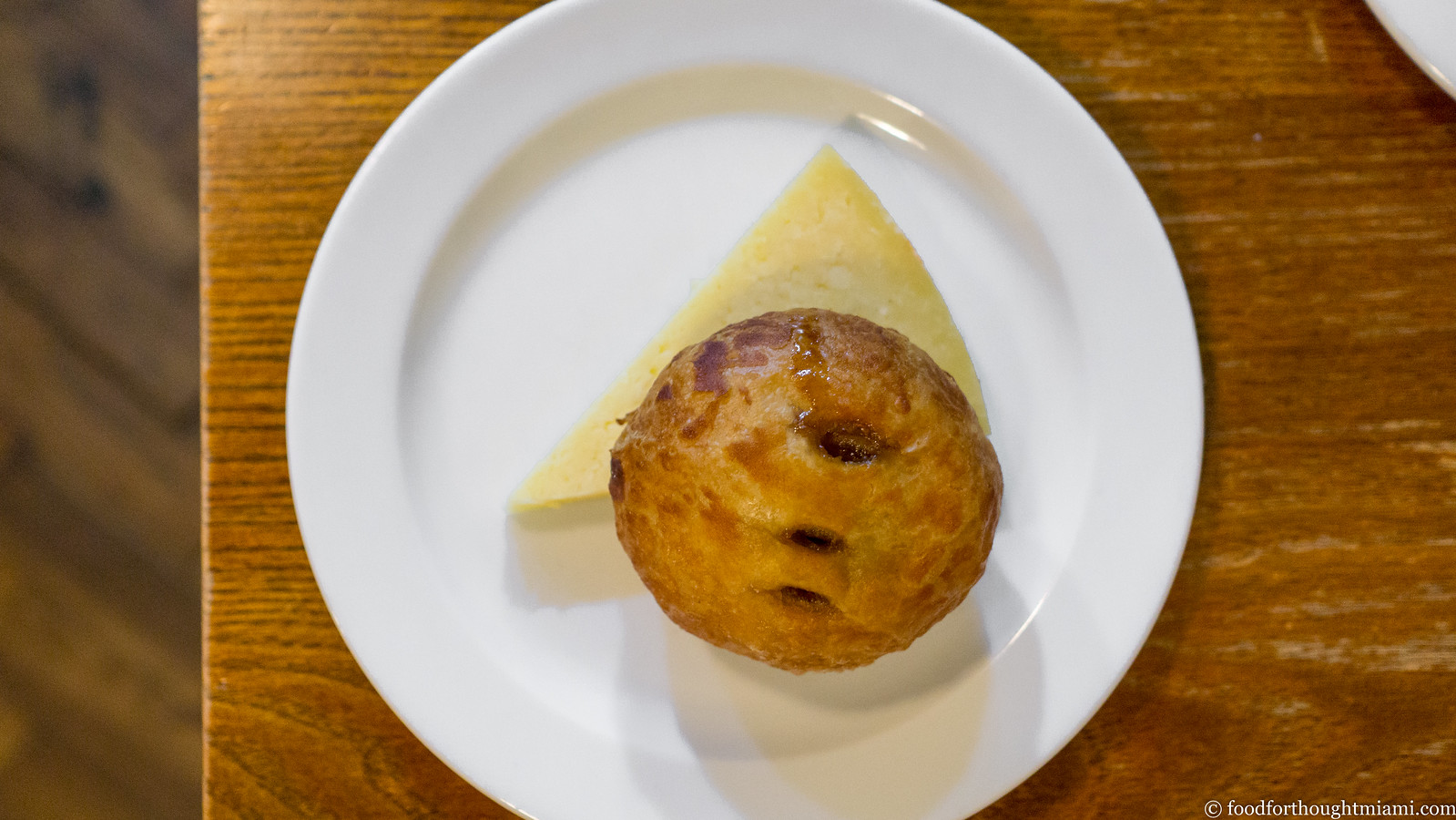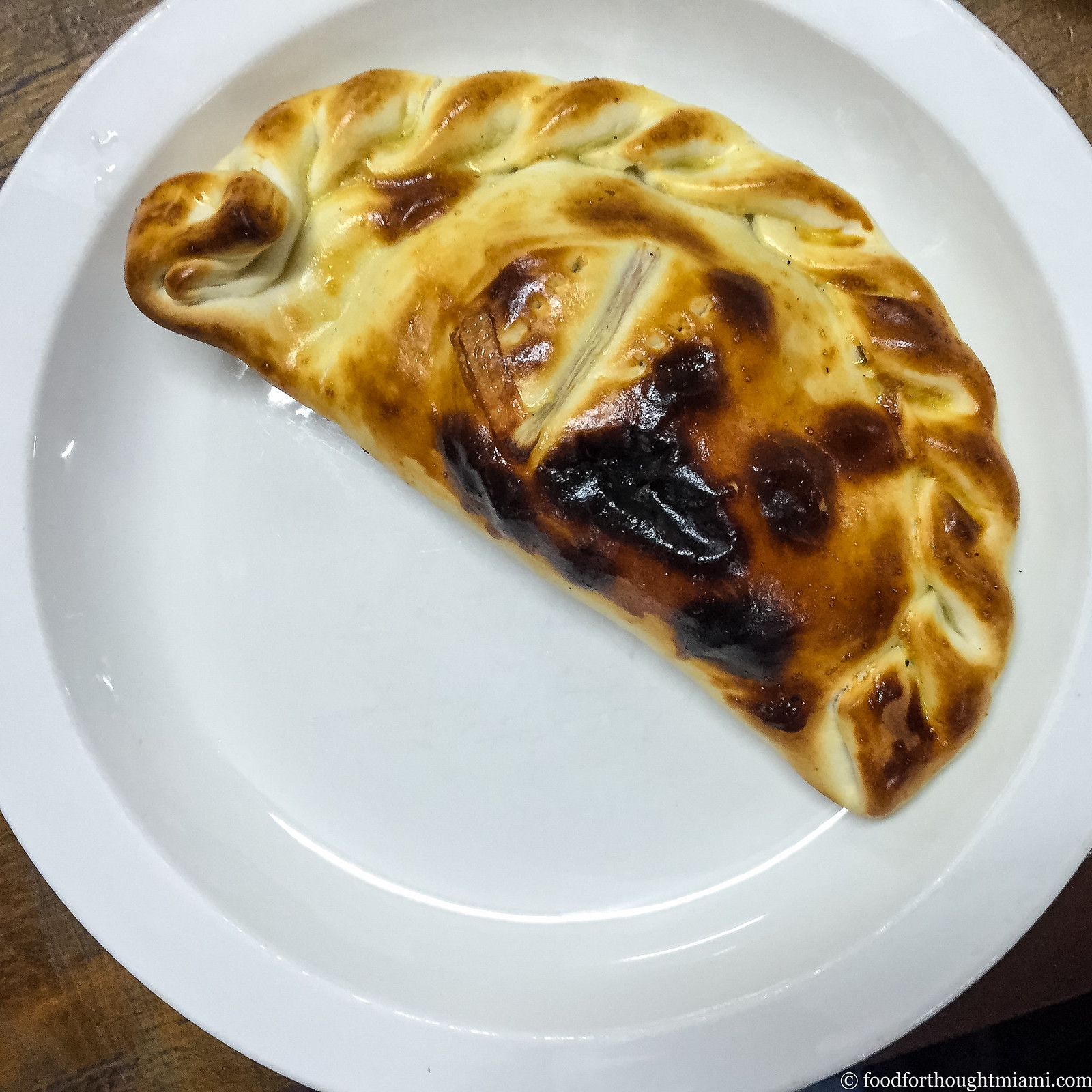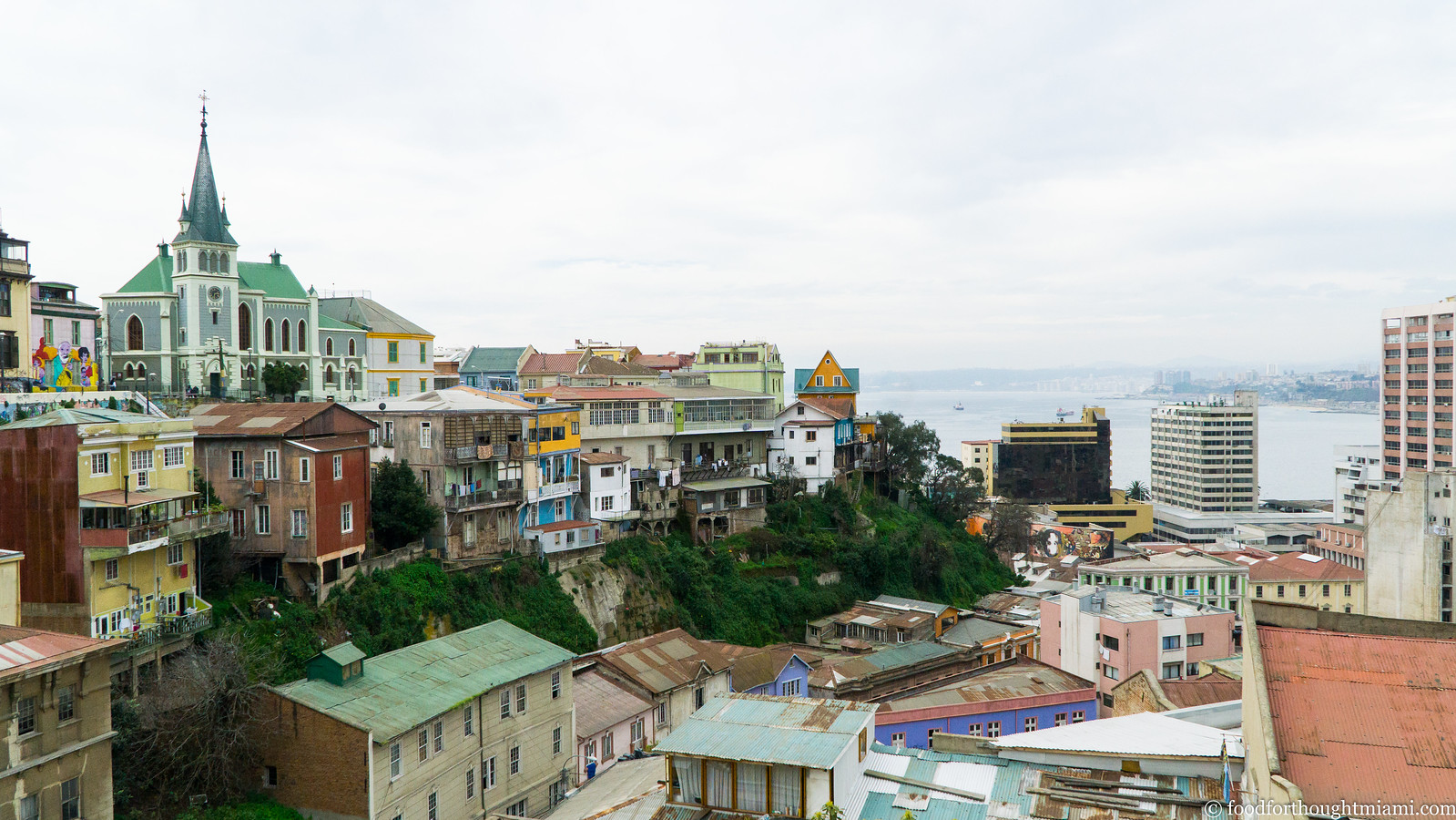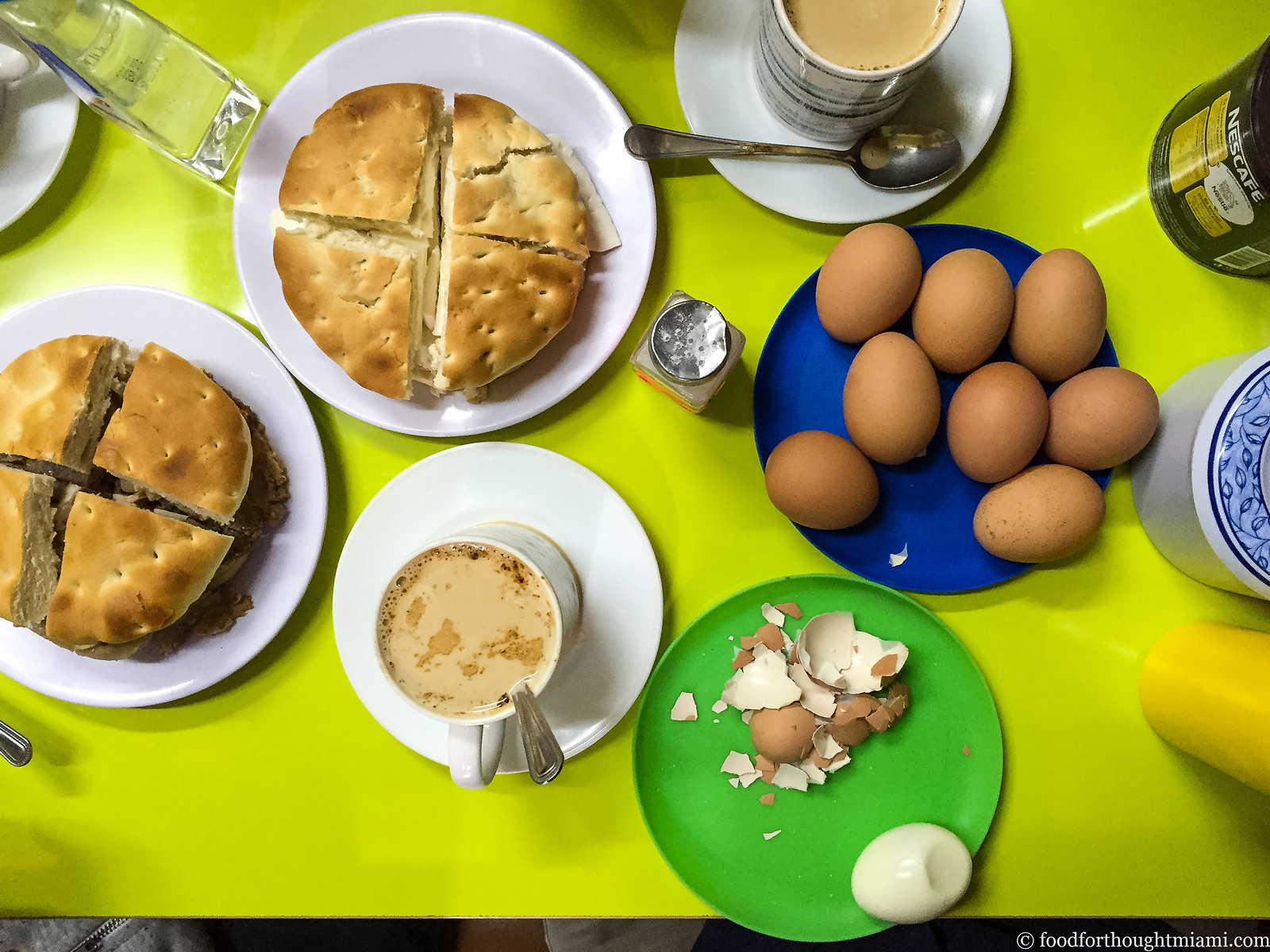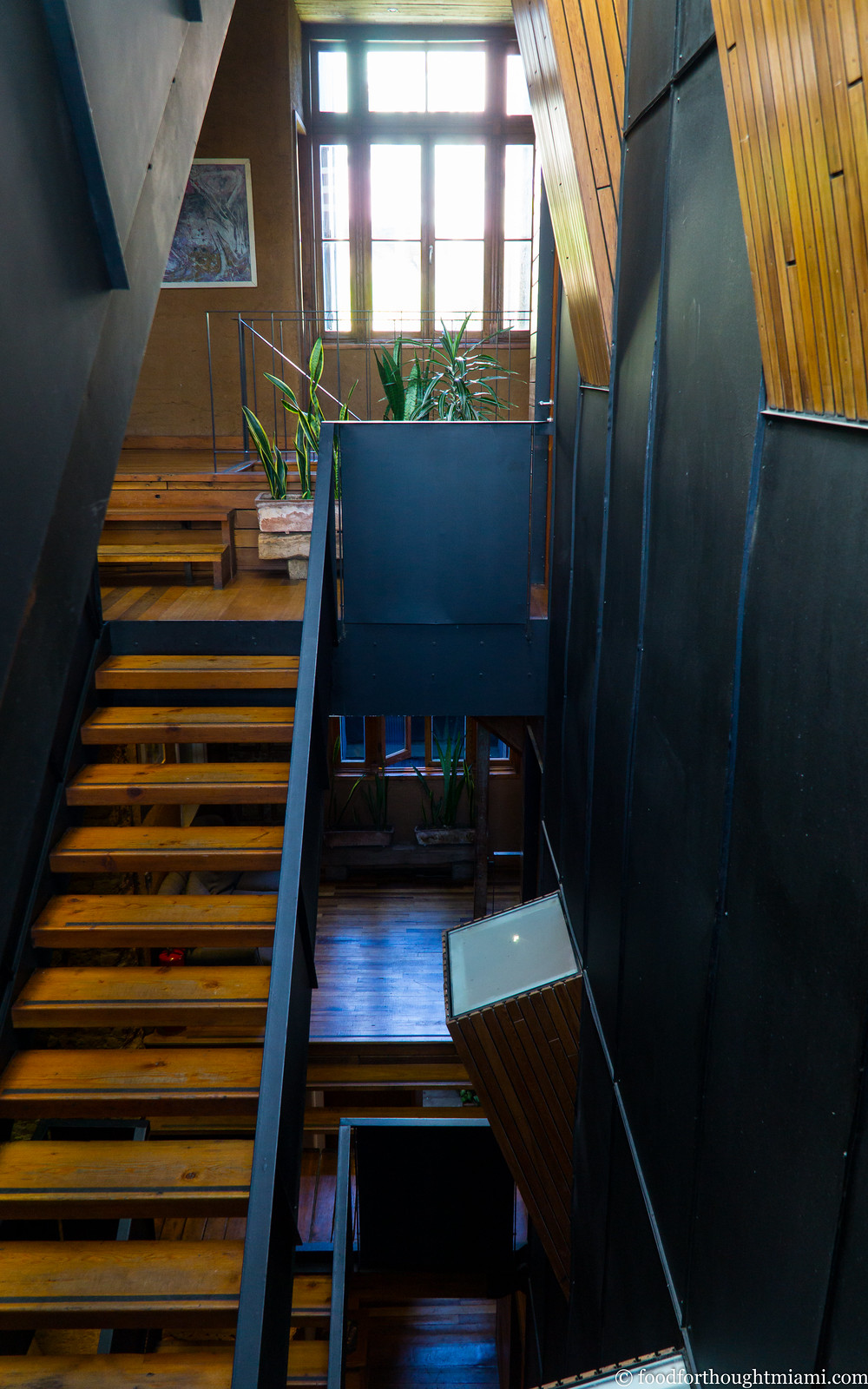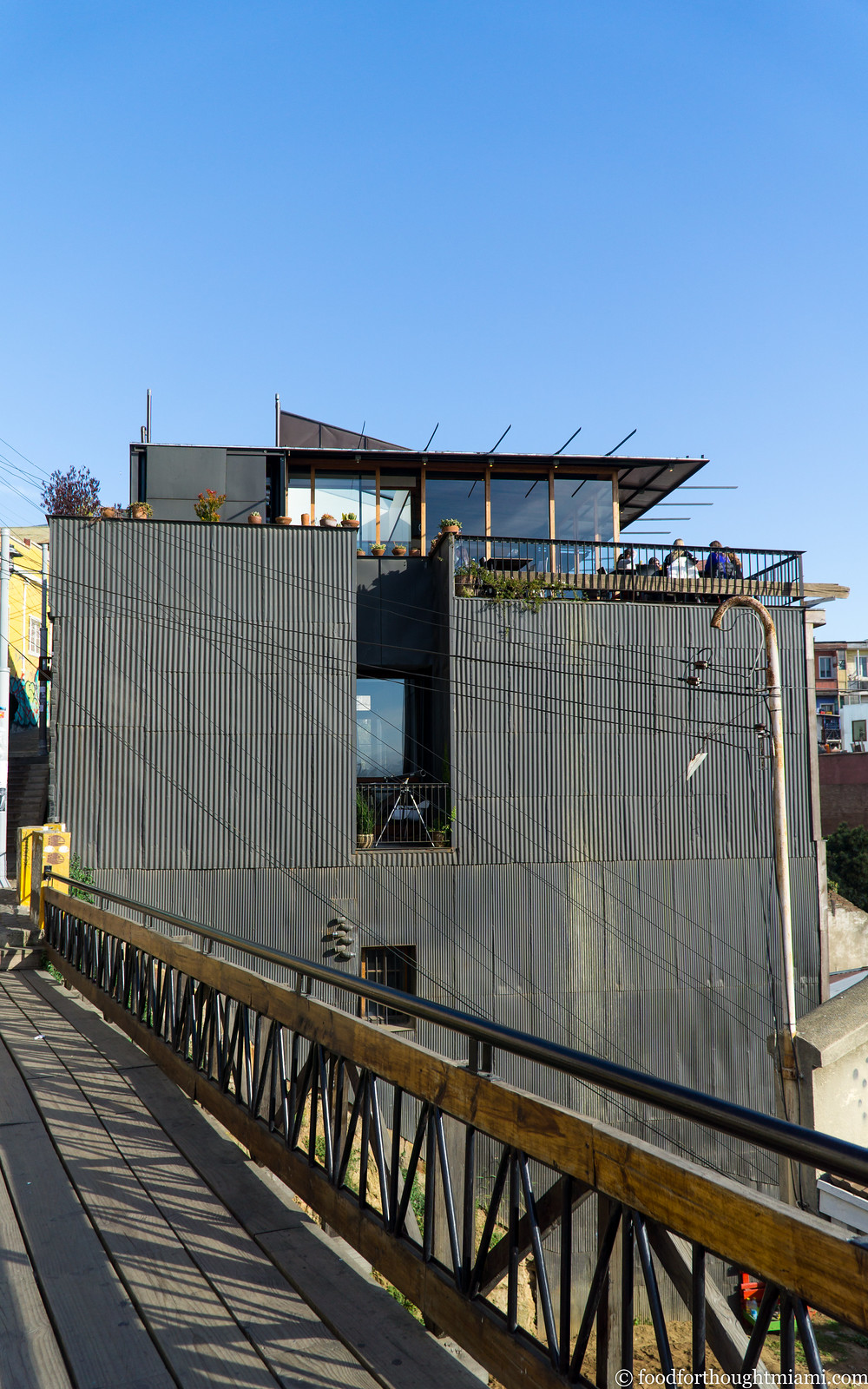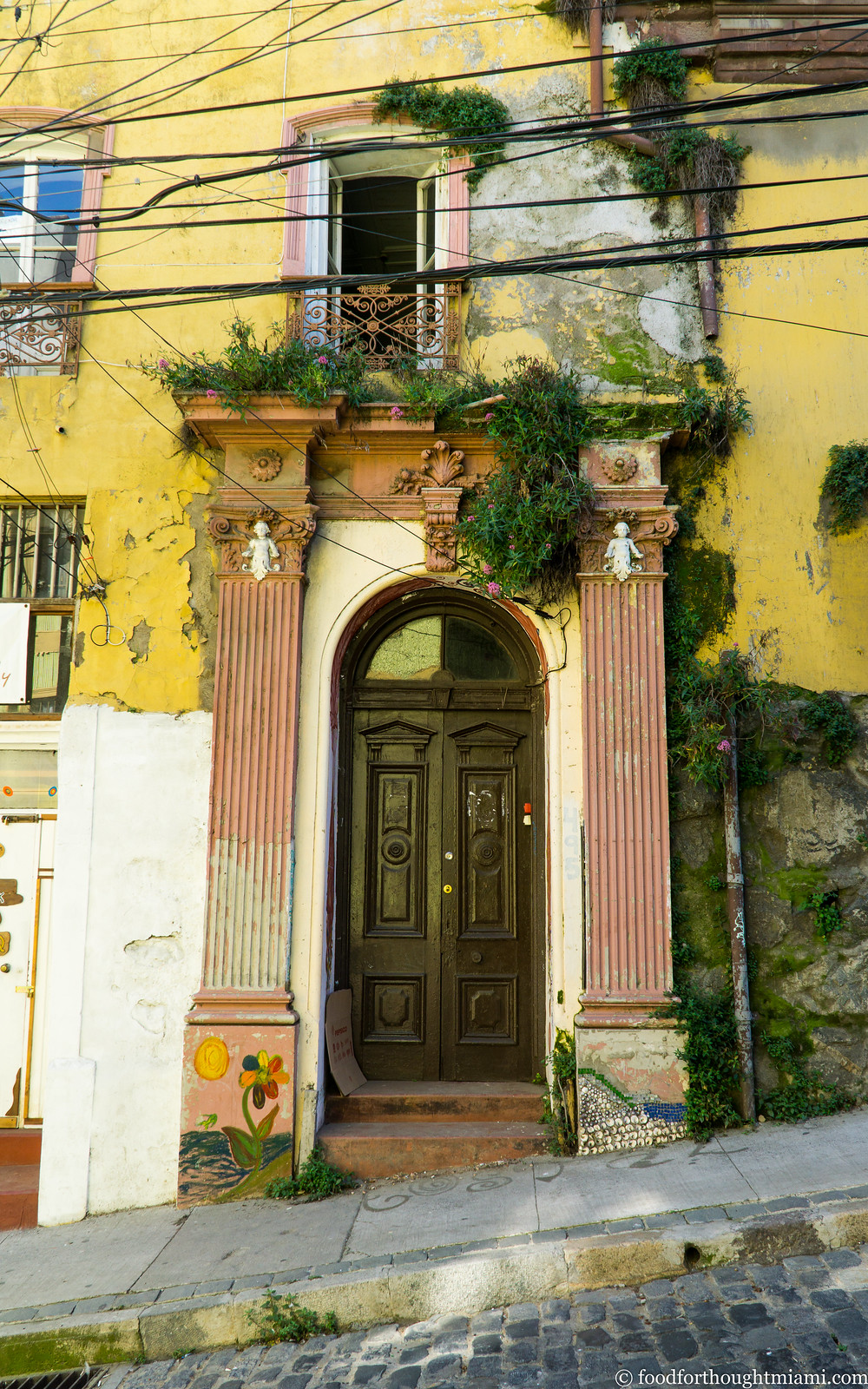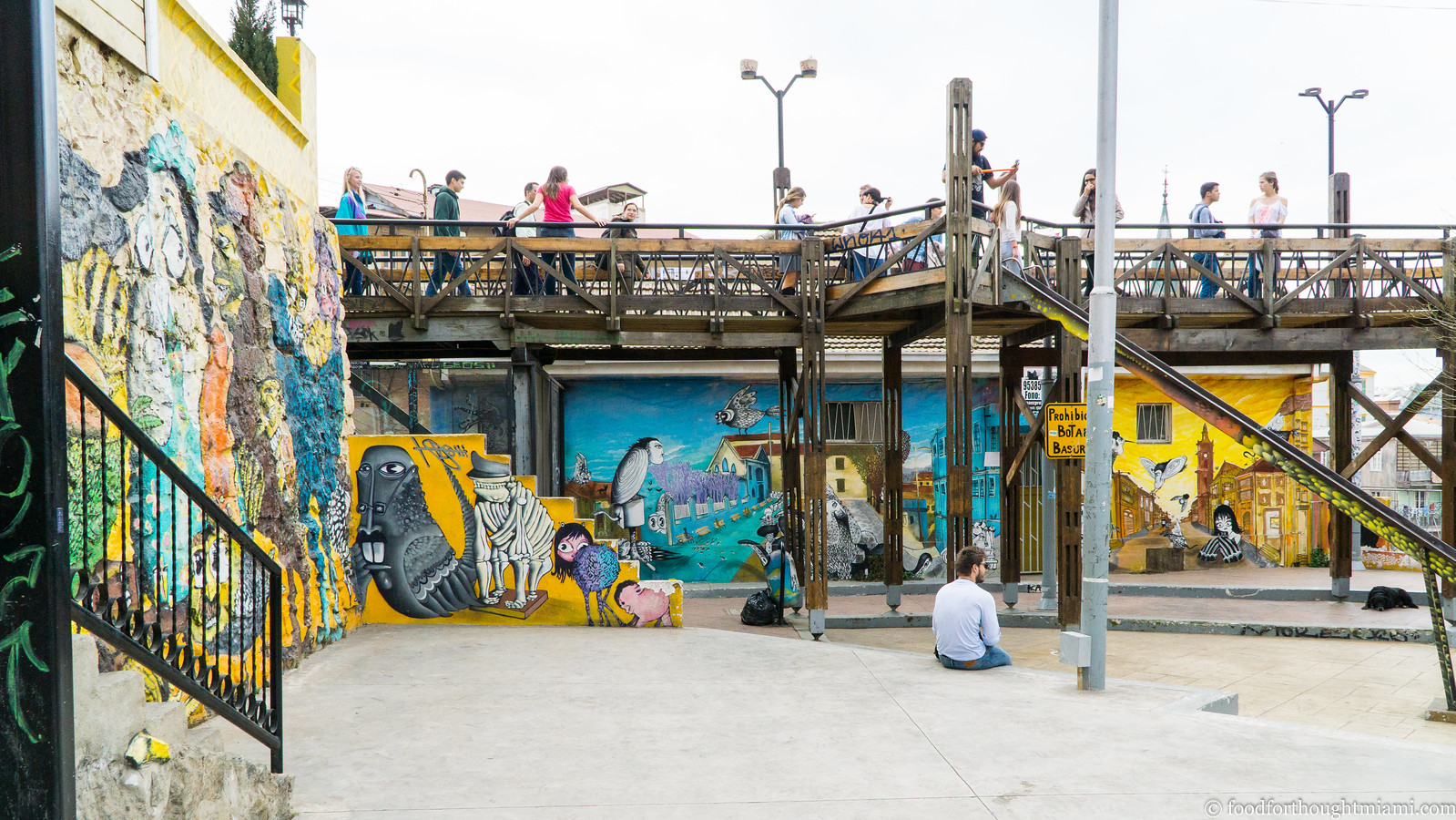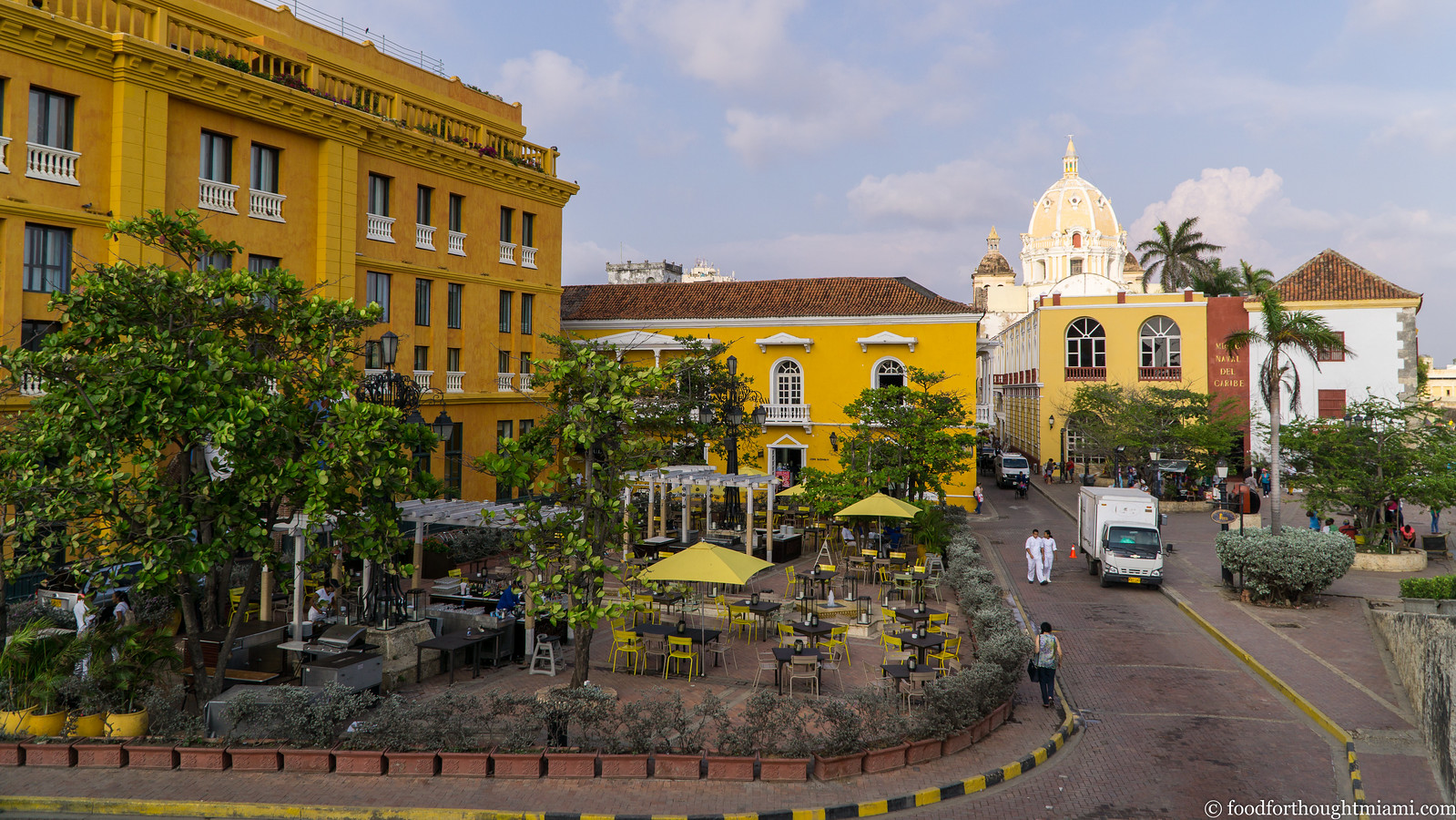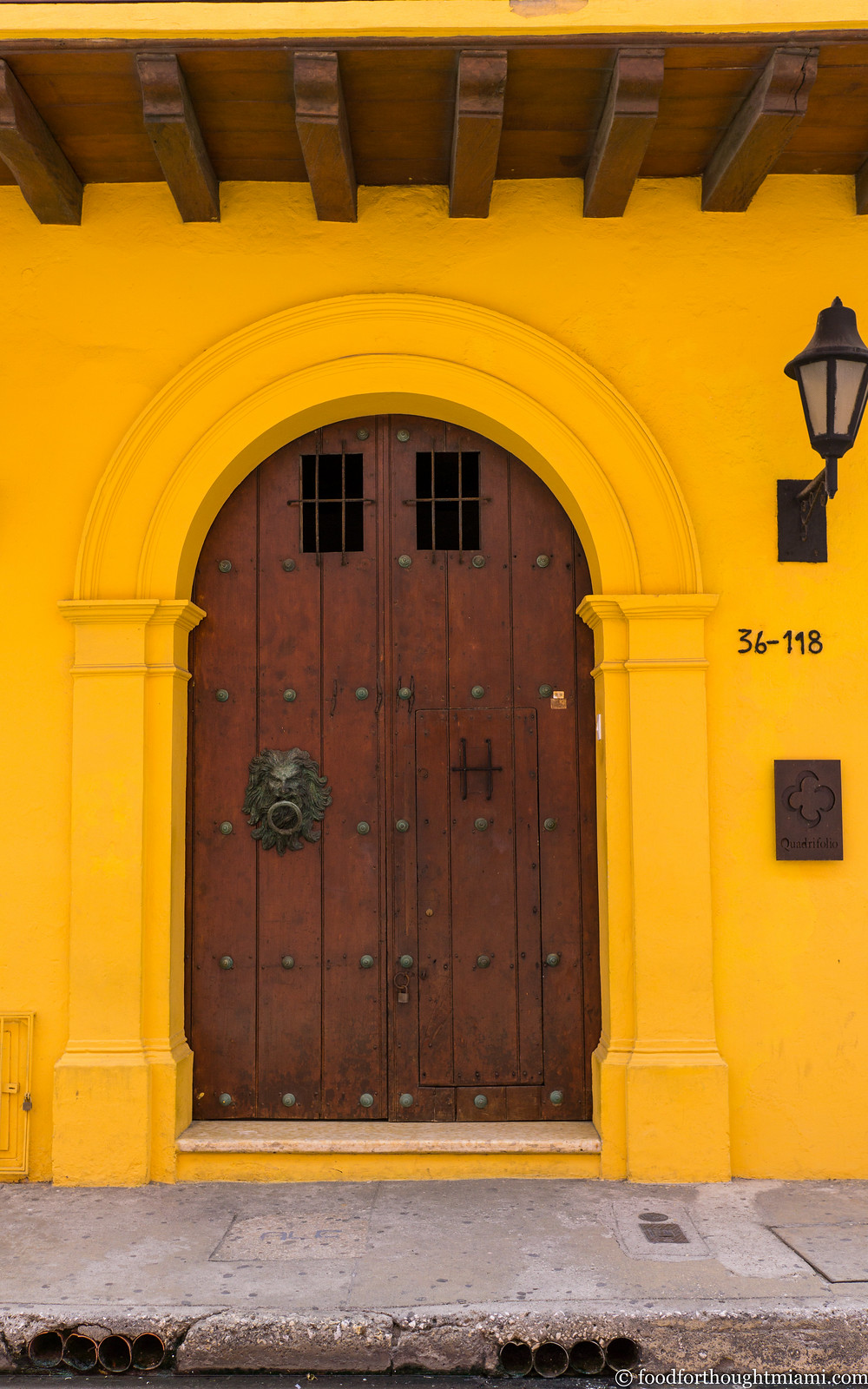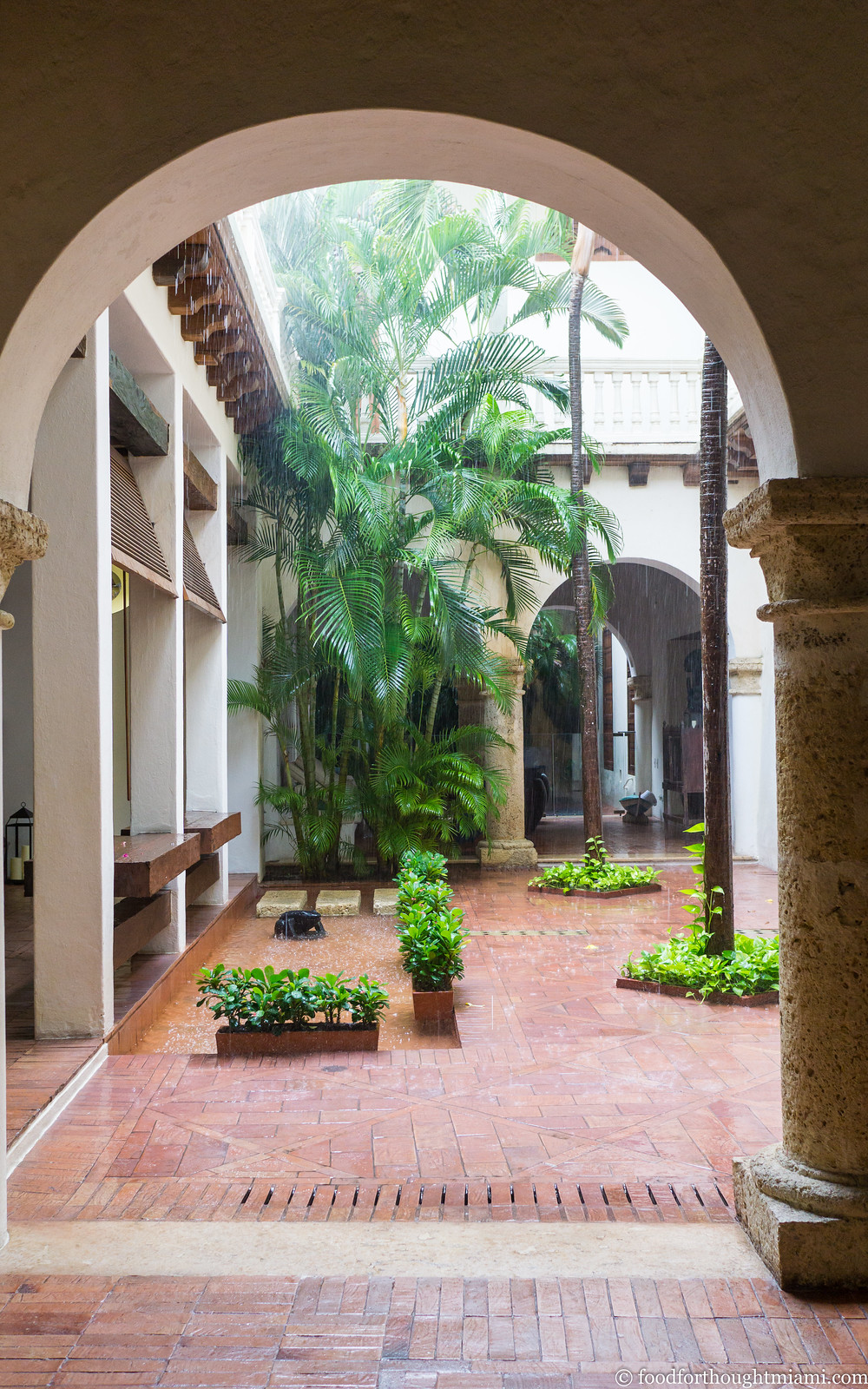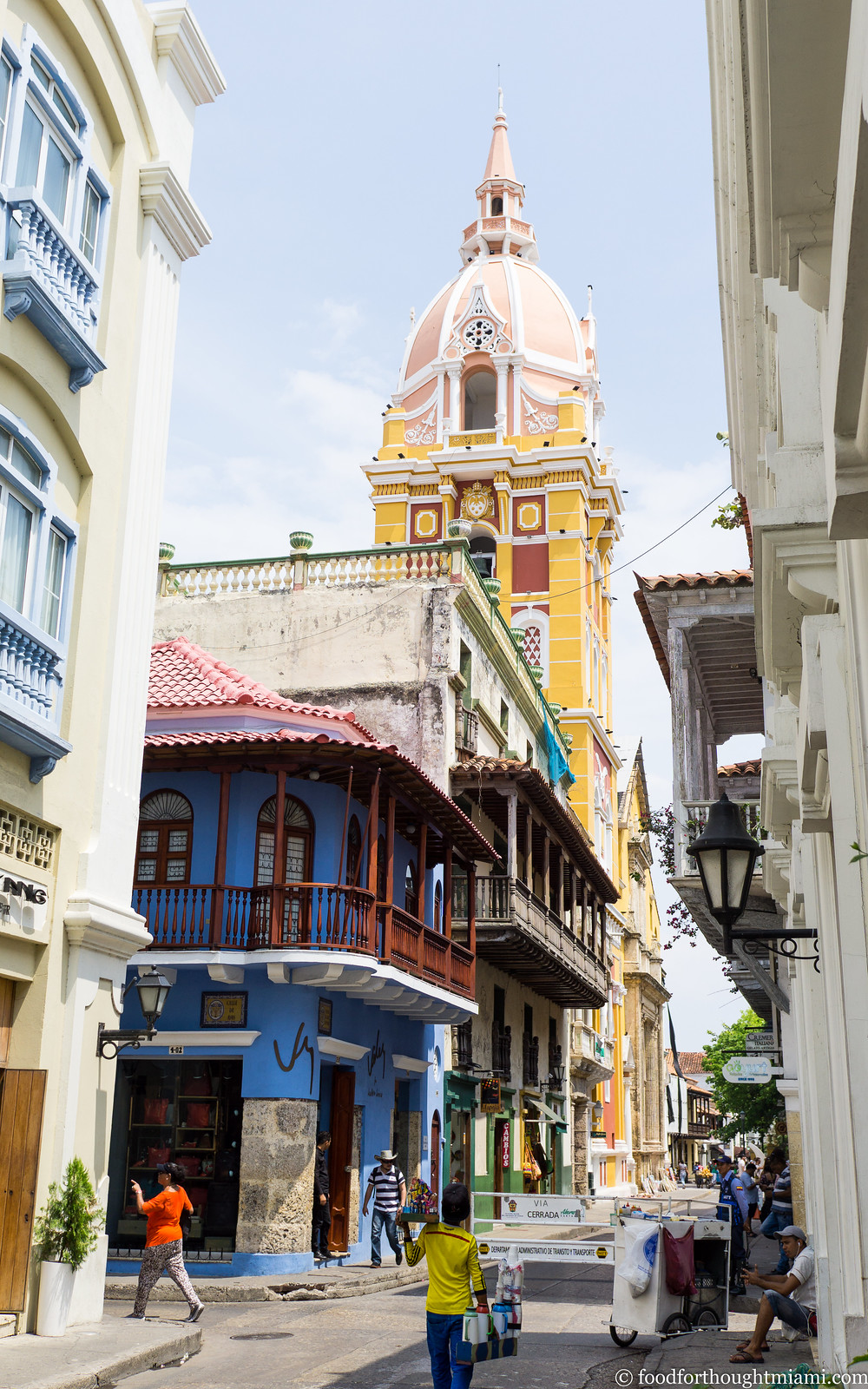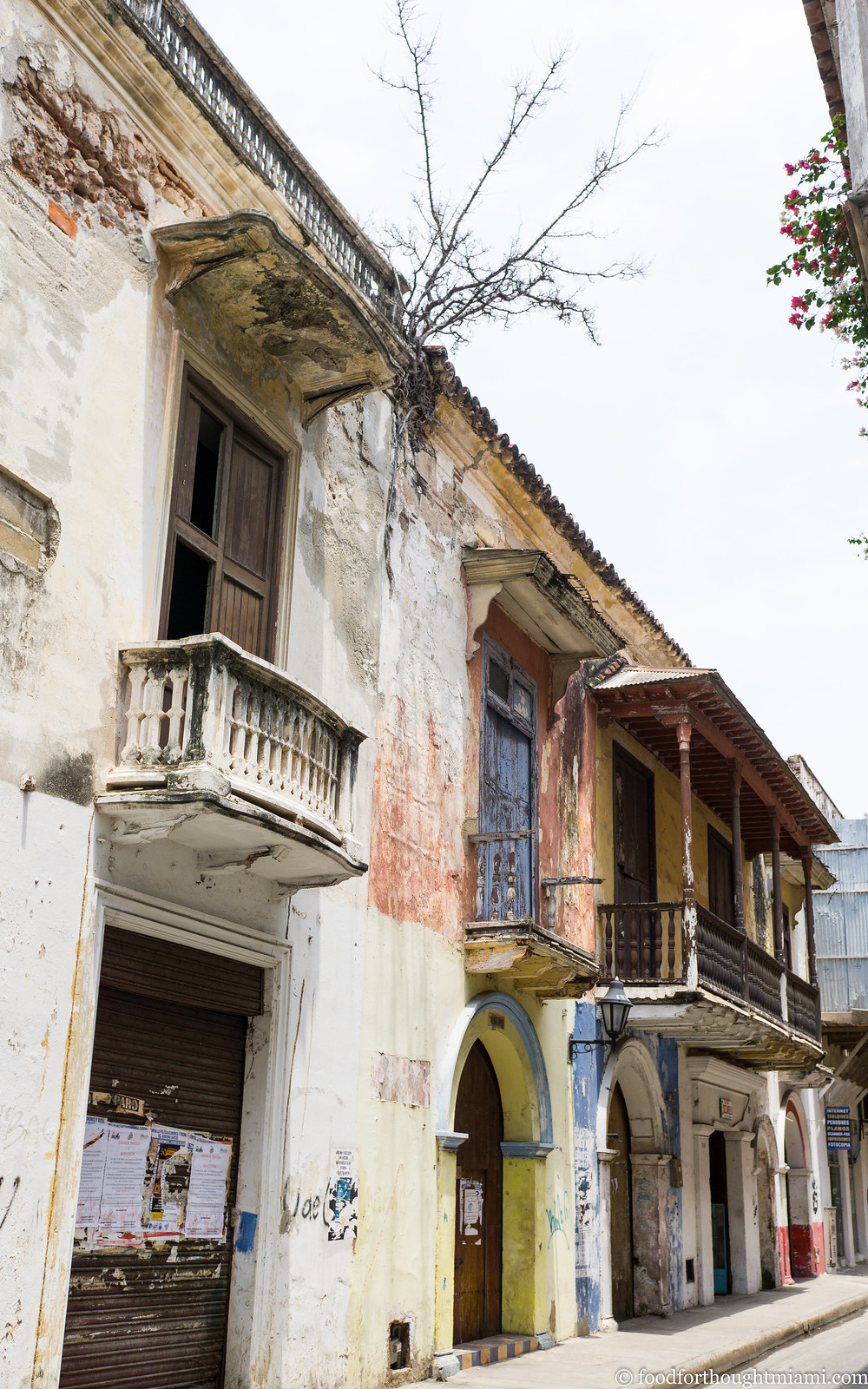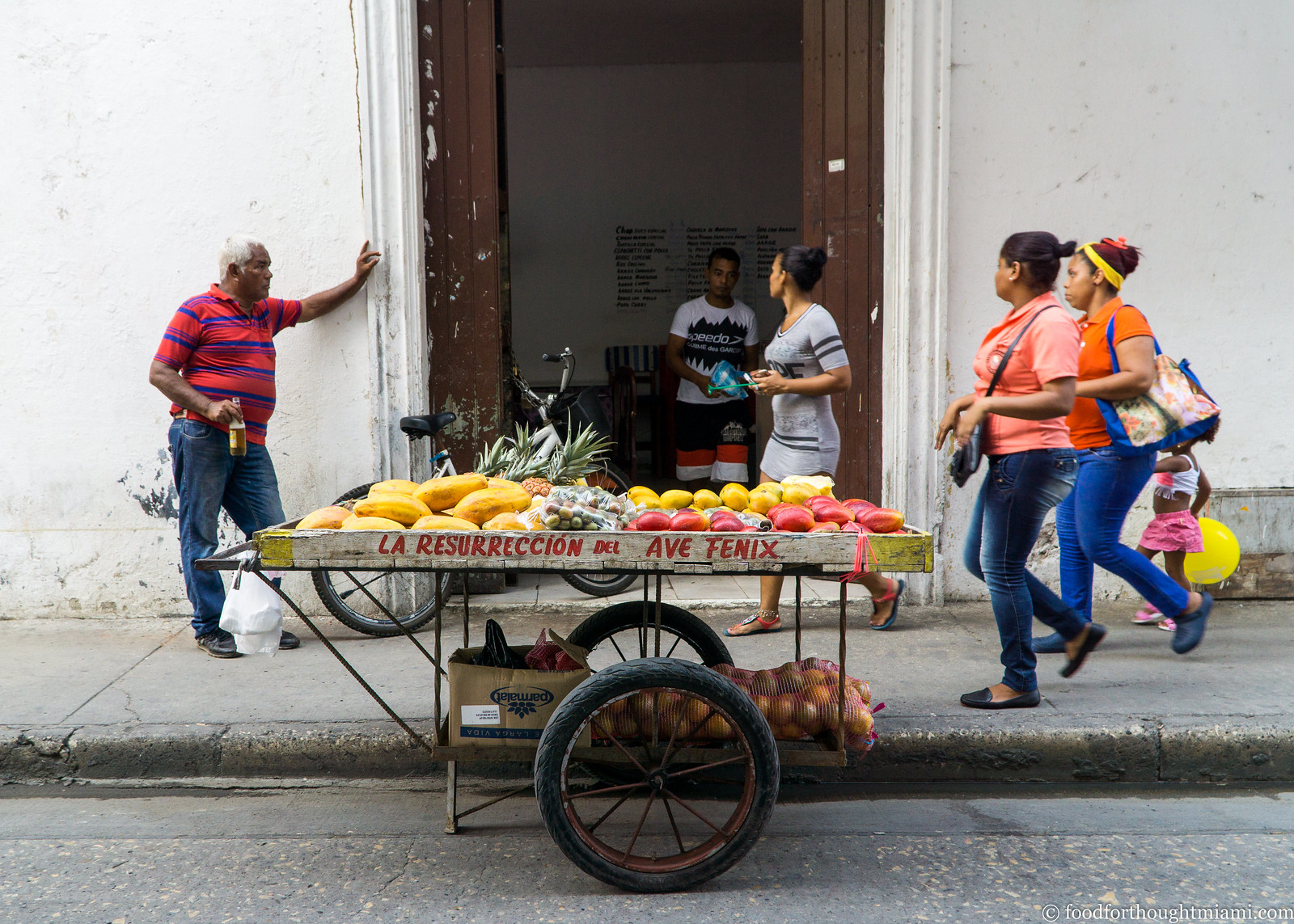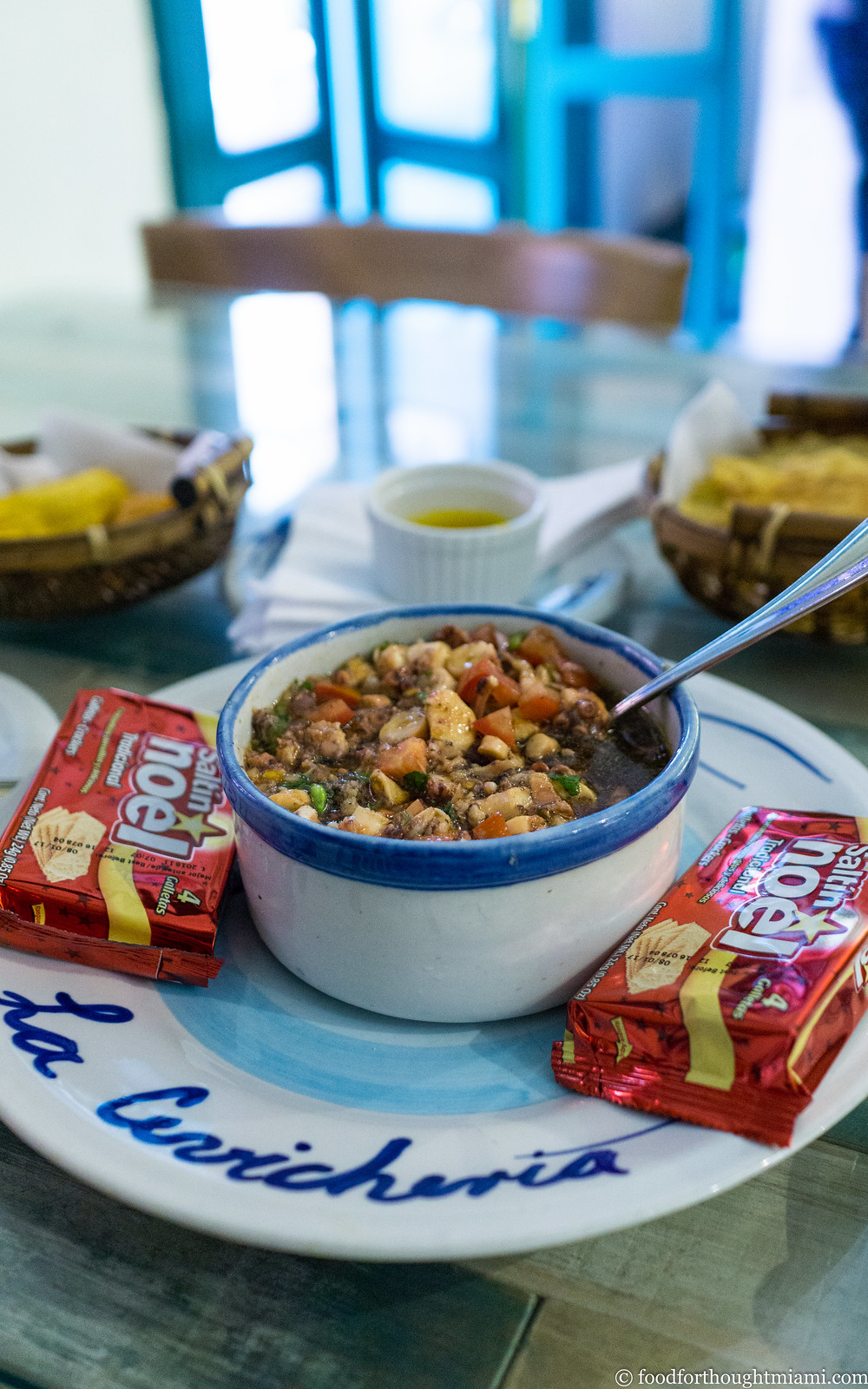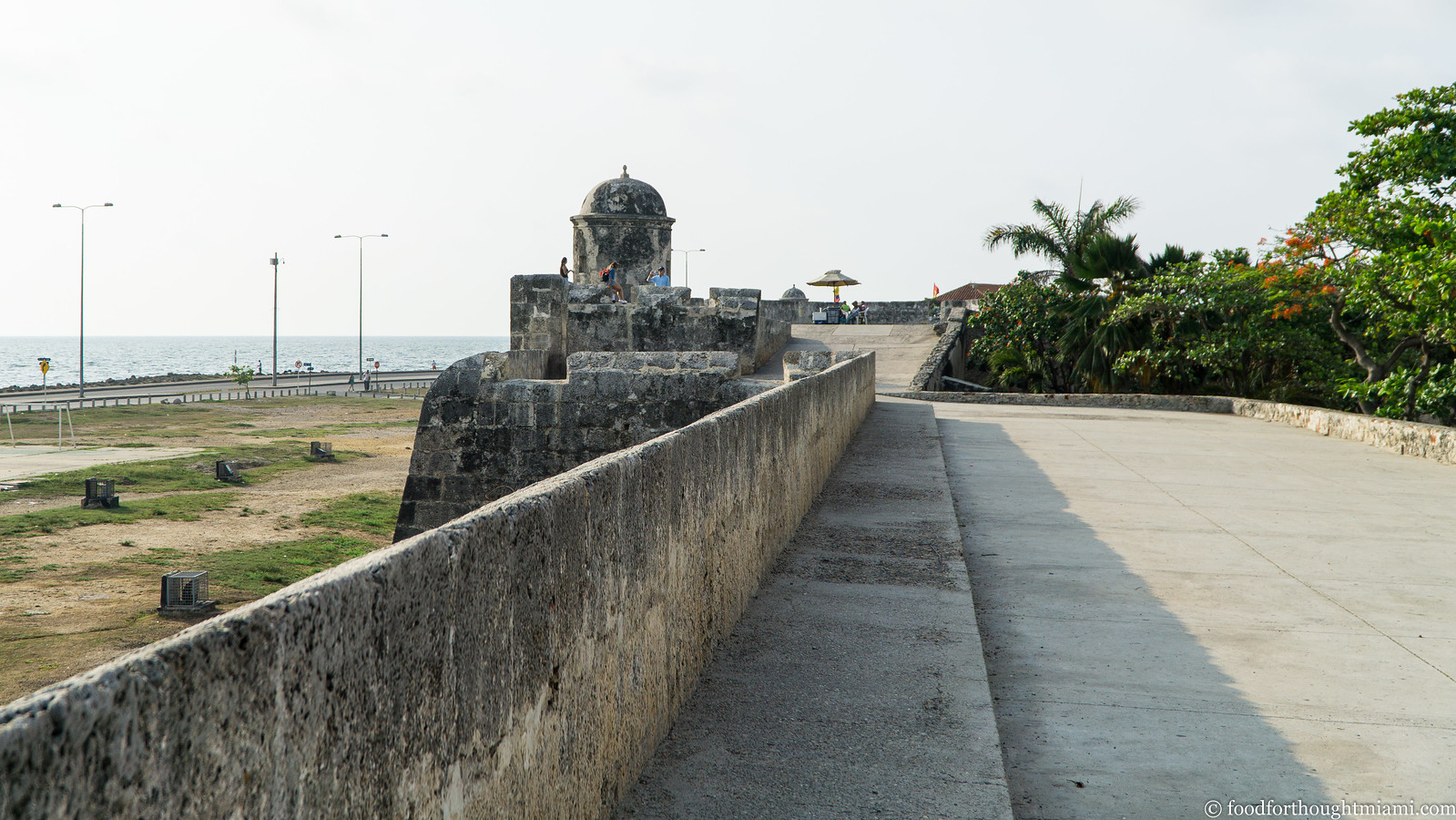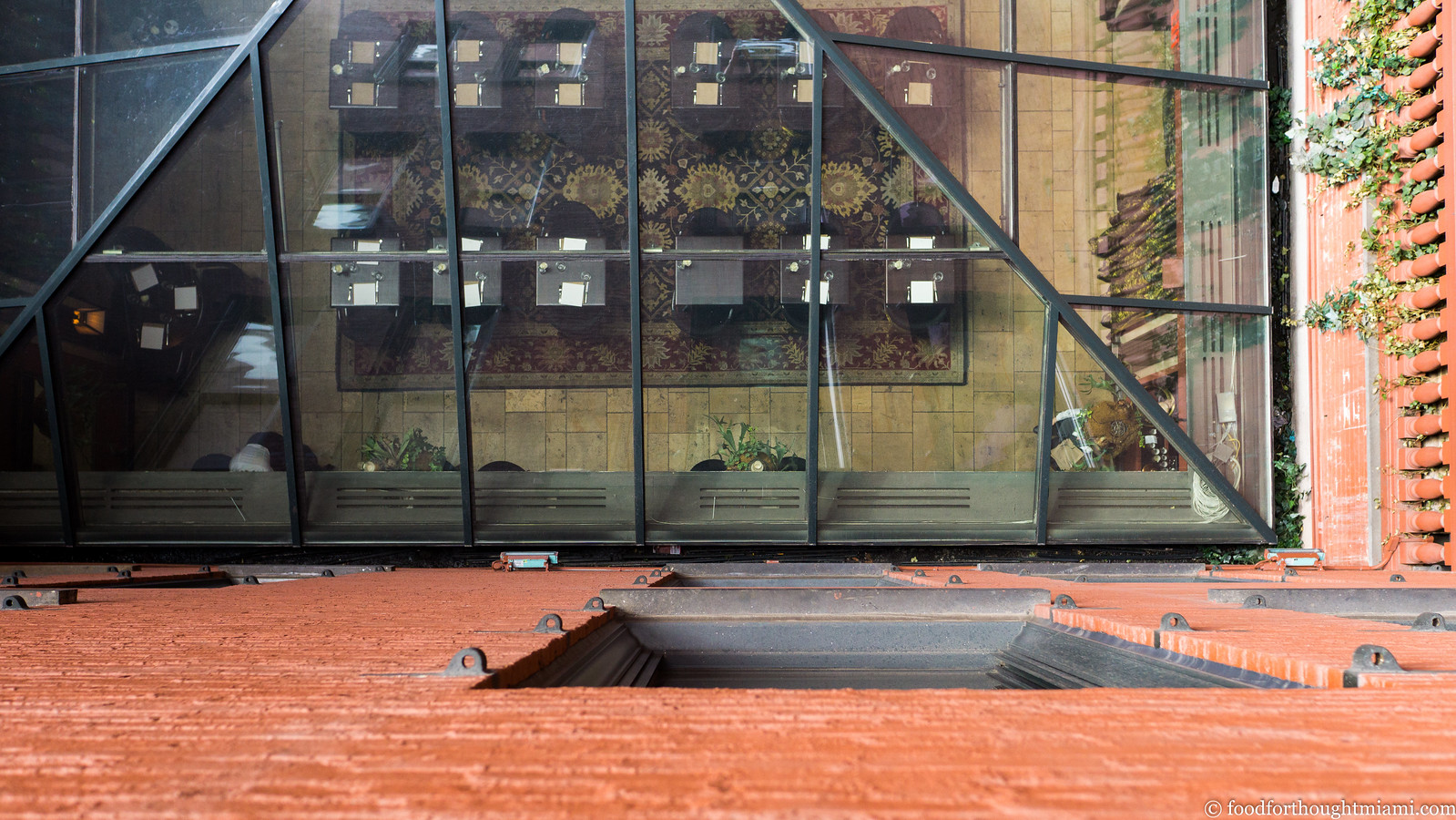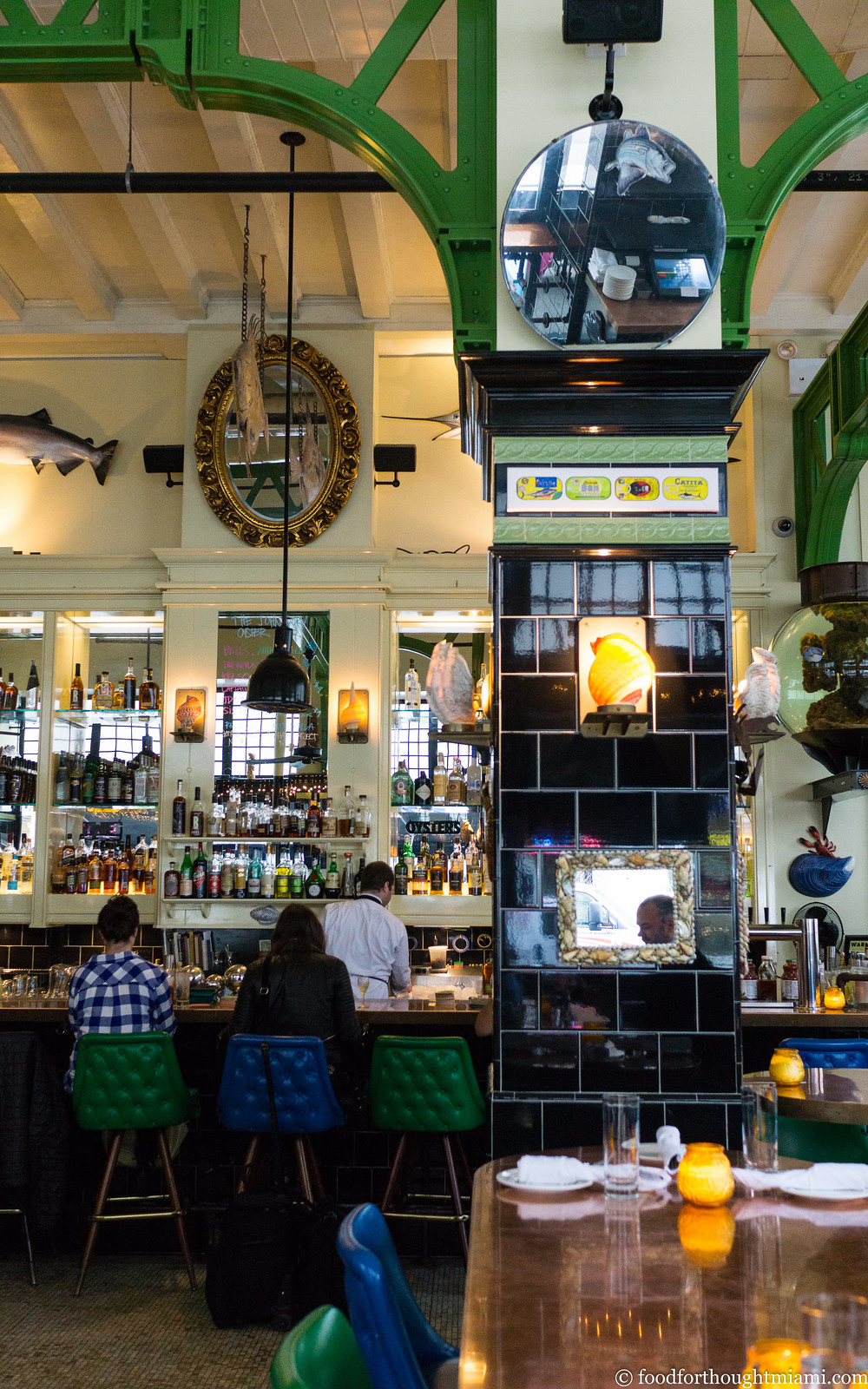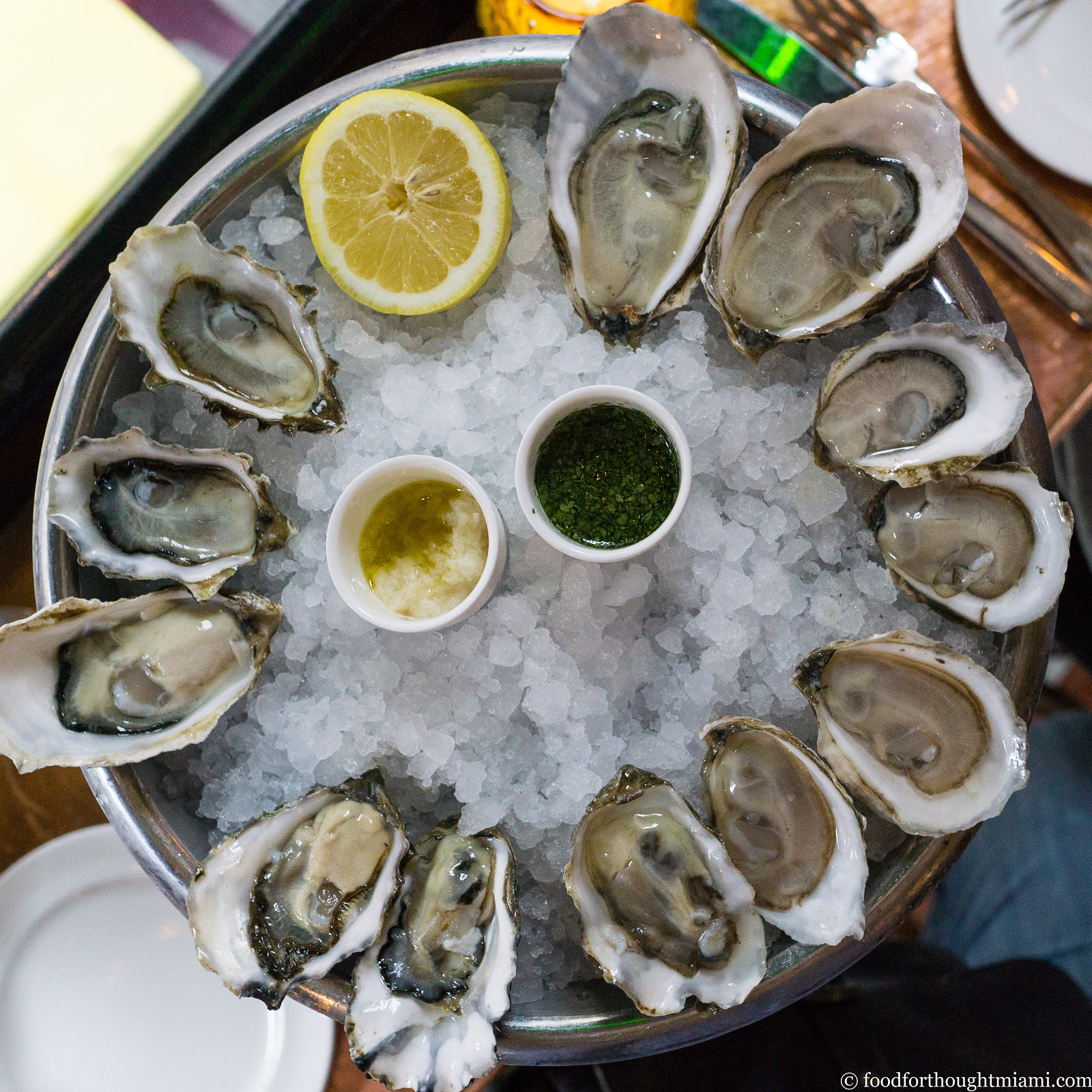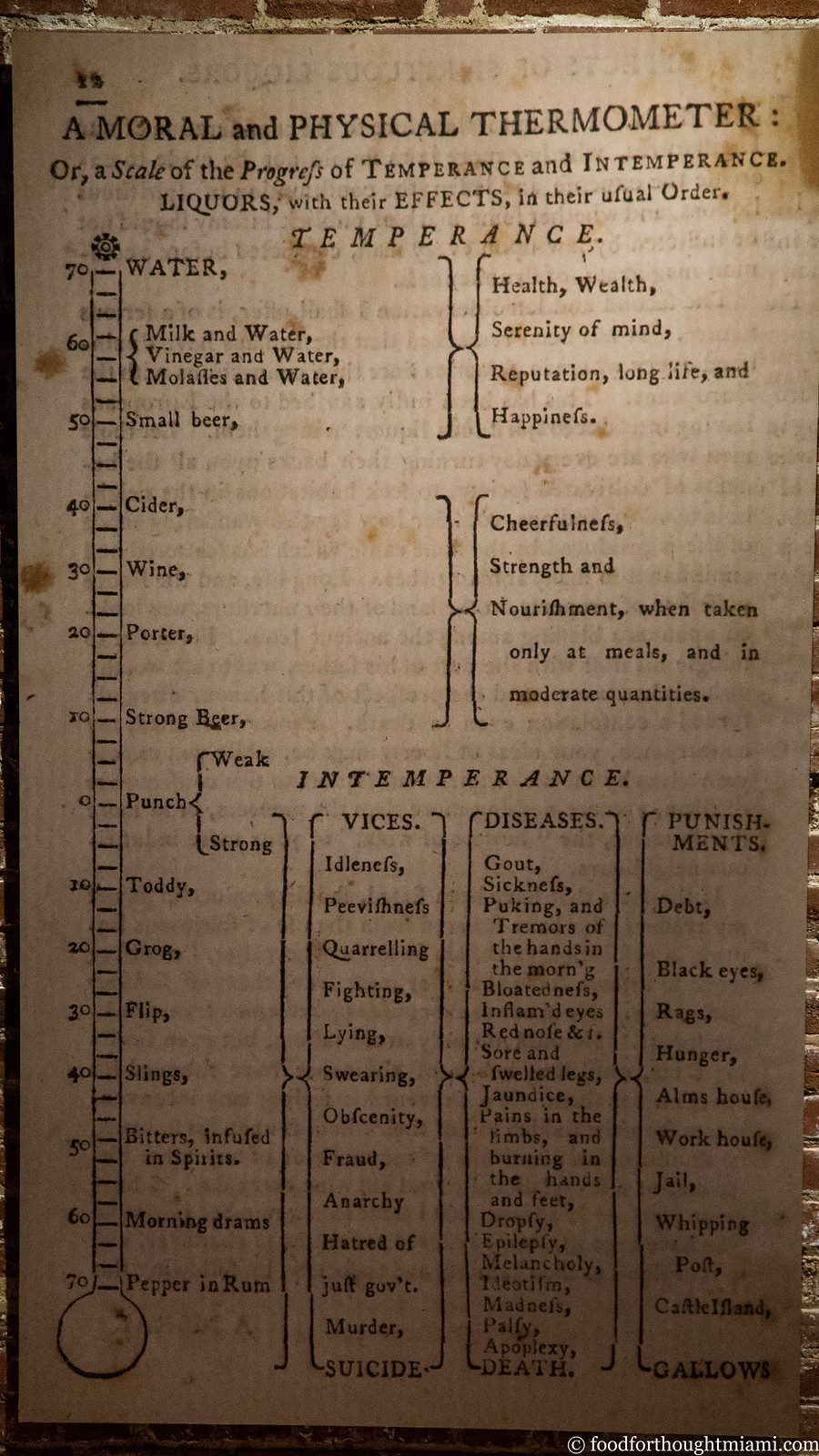Showing posts with label travelogue. Show all posts
Showing posts with label travelogue. Show all posts
Sunday, June 11, 2017
The Clove Club | London
We only had three nights in London on this last trip, our first visit in a decade, but I think our dinner choices – Rules, St. John, and on our final night, The Clove Club – successfully captured a meaningful cross-section. Each of these places might seem quite different on the surface – the red velvet banquettes and gold-framed portraits of Rules are entirely unlike the abbatoir-like black-and-white starkness of St. John, which is equally unlike the cool modernism of the Clove Club. Though the spare, contemporary plates at Clove Club might appear to be from a different world than the straightforward, traditional dishes at Rules, there's a thread which runs through them: a deeply ingrained dedication to British ingredients.
The Clove Club, which started as a living room supper club run by chef Isaac McHale, has made itself a home in a 150-year old building that used to be the Shoreditch Town Hall. Now, you enter into a smart, cozy bar – where, it should be noted, several smaller dishes from the tasting menu are available on an a la carte basis, something I'll be keeping in mind the next time in town. You pass from the bar into an equally smart dining room, the centerpiece of which is a shiny open kitchen. Sometimes these layouts feel like a stage, where the diners are meant to gaze in rapt wonder upon the chefs. This one feels more like the loft of your tasteful London friend, the one with a fetish for blue subway tile and 1960's Scandinavian furniture. It's elegant, in an understated way; but more important, it's comfortable – it still feels like it could be a living room supper club, though in a pretty fancy living room.
Dinner can be either a five-course affair, currently priced at £75, or a more elaborate tasting menu for £110, which was the route we chose.
(You can see all my pictures in this The Clove Club - London flickr set; these are from a meal in February 2017).
The meal starts with a series of snacks, the first of which is something of a signature dish: buttermilk-marinated fried chicken, dusted with pine salt, and presented nestled in a woven basket filled with pine branches. It is like the platonic ideal of a chicken nugget. A glass of Gusbourne Blanc de Blanc accompanies the snacks, and I'm pleasantly surprised to discover that very respectable sparkling wine is coming from this side of the English Channel, in West Sussex.
McHale turns his sights to his native Scotland next with a warm haggis bun, the funk of offal tempered by warm spices and a dusting of vinegar powder. Local ingredients take a Japanese turn with a rectangular laver (seaweed)[1] crisp that serves as the vehicle for a rich, oily mackerel tartare.
(continued ...)
Monday, April 3, 2017
Rules Restaurant | London
Fergus Henderson may have helped convince the world that British food was worthy of attention with his restaurant, St. John (some more thoughts on St. John here). But at Rules, they were never in any doubt.
Rules bills itself as the oldest restaurant in London. Over the past two centuries, it's been owned by only three families: Thomas Rule opened it in 1798; just before World War I, one of his descendants decided to move to France, and arranged a swap with a Brit running a restaurant in Paris named Tom Bell; and then in 1984, Bell's daughter sold the restaurant to its current owner John Mayhew.
The dining room, with its red velvet-wrapped, gold-piped banquettes, polished wood dividers, oil portraits and old cartoons on the walls,[1] the occasional marble bust here and there, looks every bit the part. If not for the bona fides of its history, the stereotypically posh decorations would seem almost laughable. I adore the place.
We first came here on a family trip to London more than ten years ago. Our daughter was about six years old at the time; she did not adjust well to the jet lag, and within an hour she was sliding under the table.[2] This time around, I was the one who wanted to throw a fit when I learned that we had just missed game season. Through the present owner's inheritance of the Lartington Estate in northern England and relationships with local game dealers, Rules sometimes has a glorious assortment of wild things on the menu – its "famous grouse," but also woodcock, pheasant, partridge, wild duck, hare and more. Alas, not on this visit.
(You can see all my pictures in this Rules - London flickr set).
Before getting to the food, I highly recommend a visit upstairs to the Edward VII Room, a/k/a the cocktail bar, a snug spot with a carved wooden bar counter, a few tables and couches, and a fine assortment of hunting murals and trophies adorning the walls. The bar program is run by Mike Cook, and his crew can handily make the classics like a pitch-perfect Negroni. But they also have their own creations, like the intensely aromatic Lucia Sciarra, named after a character from the last James Bond film, Spectre.[3]
Once I'd recovered from having missed game season (my recovery aided by a pleasant cocktail), I focused my attention on the menu, which also helped ease my disappointment. You get the sense it could have been written a hundred years ago. Chef David Stafford shows occasional flashes of whimsy, like a duck leg "pastilla" paired with a spiced duck breast, but for the most part he proudly and lovingly cooks traditional British dishes. And this he does exceedingly well.
So there's potted shrimps, a mound of tiny, tender brown crustaceans caught in Morecambe Bay, preserved in butter and spices in the way it's been done for hundreds of years. There's Middlewhite pork terrine, which makes use of a rare heritage breed of pig that originated in Yorkshire, served simply with picallili and cornichons. The shrimp taste of shrimp, the pork tastes of pork, and I couldn't possibly be happier.
For her main, Mrs. F chooses the Uig Lodge smoked salmon, sourced from a smokery on the far northern reaches of the Outer Hebrides. The salmon is served with fat slabs of brown bread and offered either with or without scrambled eggs, but surely this is a rhetorical question? The salt and smoke on the fish whisper rather than shout, and its texture is all silk, matched by the soft, creamy eggs.
For me, a real taste of tradition: a steamed suet pudding. It arrives at the table completely unadorned, looking like a doorstop from a giant's castle. Cut it open, and beneath a layer of dense, chewy suet pastry, a stew of venison, red wine and chestnut mushrooms issues forth. There's nothing light or delicate here, but it has a brawny beauty all its own; it's rich, and hearty, and sticky, and satisfying, and I love that such things still exist in this world.
Along with our mains, we have some bronze-crested, buttery-interiored potatoes Anna, as well as a perky salad with sprightly pale sprigs of frisée, crispy bacon lardons, toasty croutons and a bracing shallot vinaigrette.[4]
We always enjoy ending a meal with some good cheeses, but Mrs. F is not so much a fan of the blue-veined varieties. So I'm pleased to hear that the cheese plate, which features a few English cheeses served with biscuits and a sweet shallot jam, can be supplemented with a portion of the Cropwell Bishop Stilton. The entire wheel is brought to the table, from which they will scoop the paste onto your plate until you say "enough!" Made by a third-generation creamery in Nottingham, it's more creamy than crumbly, tangy enough to balance the fat but not so much to blow out your sinuses, and just lovely stuff.
There's a certain danger in a place like this getting weighed down by its historical baggage, but Rules manages to avoid that. It doesn't feel, or taste, like a museum piece, but rather like a living, breathing restaurant that just happens to be from another century. But good food is timeless; I hope Rules remains so as well.
Rules Restaurant
35 Maiden Lane, Covent Garden, London, England
+44 0 20 7836 5314
[1] There's also a massive mural on one wall of a stern-faced Margaret Thatcher looking as if she belongs on the prow of a ship.
[2] She didn't actively misbehave. She just sort of ran out of steam, started to fade and get a little teary-eyed, and quietly mewled "I'm broken." We still say this when it gets a little too late in the evening for any of us.
[3] The concoction includes Star of Bombay Gin, Lillet Blanc, Benedictine, Gammel Dansk Bitter Dram, and a lemon twist. You can see Cook making one here. Delicious. You can also see Rules make a cameo appearance in a scene from Spectre which was shot at the restaurant. Rules has made many other literary appearances, including in novels by Evelyn Waugh and Graham Greene, among others. Speaking of things literary, I think it's just wonderful that the restaurant proudly republishes an absolutely scathing review by Kingsley Amis entitled "Where Disaster Rules," written sometime in the 1970's, on their website ("There are cheaper eating-places than Rules where the atmosphere and service are so pleasant that they drive out other impressions. Far from the case here; but then I find it hard to imagine an establishment Elysian enough to dispel the memory of two of the most disgusting full-dress meals I have ever tried to eat in my life.")
[4] We also drink a really nice wine, the 2010 Rossignol-Fevrier "Robardelle," a premier cru vineyard in Volnay from a producer which I don't think gets distributed in the U.S. Happily, the wine list at Rules mostly shares my predilections for Burgundies, Rhones, and sub-$100 wines.
[2] She didn't actively misbehave. She just sort of ran out of steam, started to fade and get a little teary-eyed, and quietly mewled "I'm broken." We still say this when it gets a little too late in the evening for any of us.
[3] The concoction includes Star of Bombay Gin, Lillet Blanc, Benedictine, Gammel Dansk Bitter Dram, and a lemon twist. You can see Cook making one here. Delicious. You can also see Rules make a cameo appearance in a scene from Spectre which was shot at the restaurant. Rules has made many other literary appearances, including in novels by Evelyn Waugh and Graham Greene, among others. Speaking of things literary, I think it's just wonderful that the restaurant proudly republishes an absolutely scathing review by Kingsley Amis entitled "Where Disaster Rules," written sometime in the 1970's, on their website ("There are cheaper eating-places than Rules where the atmosphere and service are so pleasant that they drive out other impressions. Far from the case here; but then I find it hard to imagine an establishment Elysian enough to dispel the memory of two of the most disgusting full-dress meals I have ever tried to eat in my life.")
[4] We also drink a really nice wine, the 2010 Rossignol-Fevrier "Robardelle," a premier cru vineyard in Volnay from a producer which I don't think gets distributed in the U.S. Happily, the wine list at Rules mostly shares my predilections for Burgundies, Rhones, and sub-$100 wines.
Saturday, April 1, 2017
St. John Bread and Wine | London
Until recently, British food has been saddled with a terrible reputation. I'm reminded of the old George Carlin joke about heaven and hell:
"In heaven, the Italians are the lovers, the French cook the food, the Swiss run the hotels, the Germans are the mechanics, and the English are the police. In hell, the Swiss are the lovers, the English cook the food, the French run the hotels, the Italians are the mechanics, and the Germans are the police."
That reputation, I've always thought, has been undeserved. Even thirty years ago, when I spent a summer in Oxford "studying," I ate very well. Ploughman's lunches with good cheese and bread, rich steak and kidney pies, crisp, steamy fish and chips wrapped in newspaper, fiery Indian and Jamaican food – what's not to like?
Over the past couple decades, general sentiment seems to have shifted, and now London is regarded as one of the world's top dining destinations. Partly that's been driven by international attention for this very moneyed, lucrative market; one of the odd things about planning a recent brief visit to both London and Paris (three days in each) was realizing that many of Paris' top chefs have opened outlets in London so that, in Epcot-like fashion, you could arguably taste some of the best of Paris without ever crossing the Channel. But even more so, it's been driven by English chefs' internal reflection: recognizing, and promoting, great British cookery.
One of the individuals who was formative in that shift was Fergus Henderson. His restaurant, St. John, which opened in 1995, and his cookbook, first published in 1999 as "Nose to Tail Eating: A Kind of British Cooking" (released in the U.S. in 2004 as "The Whole Beast: Nose to Tail Eating") are mostly recognized for being a manifesto on the joys of offal and whole-animal utilization. They are most definitely that, but they also are an ode to traditional British dishes – things like cock-a-leekie soup and bath chaps and game birds and Eccles cakes – and the value of native ingredients.
I'd never been. So it was the first dinner reservation I made for this trip.
We actually booked at St. John Bread and Wine, a sibling to the original St. John around the corner from Smithfield Market. Bread and Wine, originally intended to be a bakery and wine shop (thus the name), makes its home across from the Spitalfields Market,[1] and is slightly more casual than the mothership. More of the menu is offered as small plates, and they ascribe to the "dishes come out as they're ready and are meant for sharing" school of service. Since this gave us an opportunity to sample broadly, it was perfect.
(You can see all my pictures in this St. John Bread and Wine flickr set).
Of course, you have to start with the roasted marrow bones – Henderson's most famous dish, one that has been lovingly duplicated countless times in countless restaurants around the world, one that Anthony Bourdain declared his "always and forever choice" for his Death Row meal. The formula is now well-known: roasted femur bones; toasted bread; a pile of parsley salad; a mound of coarse sea salt. Scoop the oozy marrow from the bone, spread on to the toast, dress with a sprinkle of salt and a pinch of the salad, and enjoy. I've had it dozens of times, but never until now the original. And yes, it's the best: the marrow at the magic borderline between solid and liquid, the acid and salt and herbaceous bite of the salad right on the edge of too aggressive without crossing the line, with just the right punch of caper and shallot. I can't say it better than Fergus himself:
"Do you recall eating Raisin Bran for breakfast? The raisin-to-bran-flake ratio was always a huge anxiety, to a point, sometimes, that one was tempted to add extra raisins, which inevitably resulted in too many raisins, and one lost that pleasure of discovering the occasional sweet chewiness in contrast to the branny crunch. When administering such things as capers, it is very good to remember Raisin Bran."Though not as famous, the other dishes we tried exhibited the same winning combination of good, honest ingredients, intense, robust flavors, and attentive execution.
I loved these tender curls of lamb's tongues wrapped around cubes of bread, all enrobed in a bright, verdant green sauce, like a meaty panzanella salad. Picking at a smoked fish nearly always brings me joy, and the minimalist approach here – the unadorned back end of a smoked mackerel, served simply on a plate with a potato salad given a sinus-clearing blast of mustard dressing – is my kind of happy meal.
Another testament to the joy of simplicity: slabs of toast spackled with a rich, intense mousse of duck livers and foie gras. It's just nearly too much; then you take a bite of cornichon, your appetite is restored, and you go back for more. The smoked cod's roe is like salt, smoke and sea wrapped in silk, but maybe the best part are the crispy batons fashioned from thin layers of potato perched on top. We finished with deviled kidneys: chewy, soft, springy, and ferrous, served over toast drenched with cooking juices spiked with mustard powder and Worcestershire sauce.[2]
We ordered dessert whilst draining the last of a bottle of Beaujolais, starting first with St. John's version of a classic – Eccles cake. There are whole families of traditional British desserts of which I know nothing, this being a good example. Every time I'd peruse the online menu at St. John I'd see it, and so of course I had to order it. The sweetness of the "cake" – a flaky pastry wrapped around a filling of sticky currants – is balanced by an accompanying slab of fresh, crumbly, sharp, faintly salty Lancashire cheese. Then a few minutes later, a batch of warm, airy madeleines, fresh from the oven. We trusted our server for something to drink with these, and our trust was rewarded with a glass of Pineau de Charentes.
Honestly, I wondered if St. John would live up to its nearly mythical reputation. Bourdain, in his foreword to the U.S. release of Nose to Tail, acknowledges, "My enthusiastic rant in my book A Cook's Tour made him sound like George Washington, Ho Chi Minh, Lord Nelson, Orson Welles, Pablo Picasso, and Abbie Hoffman – all rolled into one." And Henderson, both in interviews and on the page, evinces such unbridled enthusiasm, humble charm, and subtle wit that it's hard to imagine not liking his food. This is a man who can make curly parsley sound good![3]
But this was just a joyous meal: great ingredients; straightforward, bold, intense flavors; presented without any fanfare but prepared with subtle finesse. In my version of heaven, Fergus is welcome to cook the food.
St. John Bread and Wine
94-96 Commercial Street, London
020 7251 0848
[1] While Smithfield is still a functioning meat market, Spitalfields has been refurbished into a shopping mall.
[2] I rarely get to eat kidneys, and even more rarely get to eat properly prepared kidneys, but even so, their sort of crumbly, bouncy texture still puts them fairly low on my Favorite Offal list. Tripe, or livers, or sweetbreads, or hearts, would all rank before kidneys in my book.
[3] "As the swish, swish, swish of bunches of flat Italian parsley is to be heard in kitchens across the land, it seems time to celebrate the strength and character of the indigenous curly parsley. Its expression of chlorophyll and well being, strong flavor, slightly prickly texture, and its structural abilities enable such things as Parsley Sauce."
[2] I rarely get to eat kidneys, and even more rarely get to eat properly prepared kidneys, but even so, their sort of crumbly, bouncy texture still puts them fairly low on my Favorite Offal list. Tripe, or livers, or sweetbreads, or hearts, would all rank before kidneys in my book.
[3] "As the swish, swish, swish of bunches of flat Italian parsley is to be heard in kitchens across the land, it seems time to celebrate the strength and character of the indigenous curly parsley. Its expression of chlorophyll and well being, strong flavor, slightly prickly texture, and its structural abilities enable such things as Parsley Sauce."
Monday, September 19, 2016
travelogue: Chile, Part 2 - Santiago
After a day in Valparaiso and a quick pass through the Casablanca Valley wine country (more on that in Part 1 of my Chile travelogue), we were back in Santiago for a couple days. It is a big, sprawling city, which became more manageable as we got a sense of its neighborhoods: the relatively quiet, low-scale, Barrio Lastarria, whose European architecture reminded me of San Sebastian, Spain; the funky, bohemian Barrio Bellavista; the bustling business district around the Palacio de la Moneda; the towering high-rises and shiny new shopping malls of Providencia; the über-posh, almost Beverly Hills-like Vitacura neighborhood where Boragó restaurant resides; the bucolic stretch of shops and cafés in the Barrio Italia.
We made our home base at the Lastarria Boutique Hotel, a really nice modern refurbishment of a big 1920's house on a Lastarria side street. Most of the high-end chain hotels are in Providencia or nearby Las Condes, but we liked this location: not as generically big-city, closer to the museums, and a ten-minute walk through Bellavista to the Parque Metropolitano which surrounds Cerro San Cristóbal.
After checking in and dropping our bags, we made our way over to the Plaza de Armas – the original city center. The plaza was packed: with entertainers hustling for tips, with crowds cheering them on, with merchants set up along the street, and with – well, a grocery cart being pushed by a couple Peruvian guys, filled with an odd assortment of stuffed animals and no less than four dogs, all of whom seemed perfectly happy with the arrangement.
Many Santiago restaurants are closed on Sundays, but we found a spot along Calle Monjitas which had an assortment of different empanadas all made and baked in-house, including this one stuffed with shrimp and cheese.
Nearby is the Museo Chileno de Arte Precolombino, which houses a great collection of pre-Columbian artworks and artifacts. One floor displays items from the different regions and cultures of Chile, like this cat-faced bowl made by the Diaguitas peoples, dating from around 1,000 A.D. Another floor more broadly covers most of South and Central America and the Caribbean. It's a well-organized exhibition that gave history and context to our visit to this region.
For dinner, we met up with a friend of Mrs. F and her family at a place called Las Cabras. Though it's right next to the gaudy Costanera Center, a shopping mall-office building complex that includes the tallest building in Latin America, Las Cabras is a modest, no-frills place. It calls itself a "fuente de soda" – a "soda fountain," a Chilean institution much like the U.S.'s mid-century drugstore luncheonettes.
At Las Cabras, Chef Juan Pablo Mellado Arana cooks straightforward Chilean classics, but does it with diligent attention to ingredients and technique – and cocktails, to boot. (For more backstory, there was a good feature in the New York Times last year).
We scooped pebre, a mild salsa of tomatoes, onions, cilantro and chiles, with crusty rolls, and sipped pisco sours, and then shared a palta cardenal, a halved avocado overstuffed with creamy shrimp salad, served over a salad of greens and hard-boiled eggs and olives. We ate charchas de chanco (tender, sticky braised pork cheeks), and beefy lengua (tongue) in a tangy tomato sauce, and a hearty sánguche (sandwich) of grilled churrasco steak.
Our Chileno friends approved of the choice. (Unfortunately, it was too dark at our outdoor table for any good photos).
Las Cabras Fuente de Soda
Luis Thayer Ojeda 0166, Providencia, Santiago, Chile
+56 22 232 9671
(continued ...)
Tuesday, September 6, 2016
travelogue: Chile, Part 1 - Valparaiso and Casablanca Valley
I'm not sure I ever would have thought to go to Chile on my own. But Mrs. F had been in Santiago a couple years ago for something work-related, and came back raving about the bustling, cosmopolitan city surrounded by the Andes mountains. After doing some homework, I found plenty to get excited about too. We plotted a week-long trip when we'd have all the family together: a day on the Pacific coast in Valparaiso, a quick tour through Casablanca Valley wine country, a couple days in Santiago, wrapping up with a stay in the Atacama desert toward the north.
You probably know by now that the food usually plays a not-inconsequential role in my choice of travel destinations. But I didn't know much at all about Chilean cuisine. In fact, to be honest, I'd only heard of one restaurant in the entire country: Rodolfo Guzman's Boragó, a high-end tasting-menu place that has drawn the attention of the International Dining Mafia. Needless to say, this was entirely a function of my own ignorance: what I found was a country with a rich, complex and delicious culinary culture fueled by the incredible bounty of seafood from its extensive coast and a combination of pre-Columbian and colonial ingredients and influences, with a sense of history and tradition as well as creativity and playfulness.
Our red-eye flight to Santiago arrived around 6 a.m., and we'd arranged for a driver to take us to Valparaiso, about 1 ½ hours due west on the coast. About a half hour in, our driver Gustavo realized we needed a little sustenance. Near the town of Casablanca, he pulled into Caféteria Don Floro, a small, open-air roadside restaurant. Each of the formica booths was set with a plate of hard-boiled eggs and canisters of instant coffee. We peeled and salted eggs and sipped Nescafé café con leches as some pan hallulla, a dense, chewy, round bread, was toasted over a charcoal brazier near our feet.
The menu at Don Floro was comprised almost entirely of sandwiches – Chileans, it seems, eat sandwiches for breakfast, lunch and dinner – so we shared one stuffed with "arrollado de campo," a roll of pork bits wrapped in its skin, and another with "queso fresco de vaca soltero," fresh cheese made from the milk of a single cow. I'm not sure this place was any better or worse than any other roadside stand along the way between Santiago and Valparaiso, but Gustavo clearly had an opinion on such matters, as he drove by several other places before stopping here, and our breakfast validated his judgment. We were groggy, and hungry, and this really hit the spot.
(A few more pictures in this Caféteria Don Floro flickr set).
Appropriately fortified, we made it to Valparaiso without incident, where we checked into the Fauna Hotel, a clean-lined, modern property which is actually a refurbishment of two old buildings that date back to the 1870's.[1] The hotel was both stylish and comfortable, and its setting offered a fantastic vantage point (the picture at the top of this post was taken from the window of our room), while also being centrally located for exploring the town. Valparaiso is a city of hills, and the Fauna sits atop of one of them – Cerro Alegre – across from a funicular station at its summit, at the end of a pedestrians-only street.
(Some more pictures in this Fauna Hotel flickr set).
Fauna Hotel
Pasaje Dimalow #166, Cerro Alegre, Valparaiso, Chile
+56 32 3270719
Like Cartagena, Colombia, which we visited earlier this year, Valparaiso's historic quarter has been designated a UNESCO World Heritage Site. And it's easy to see why: the twisting streets, steep hills, and colorful buildings (many of which date back to the 19th century), all overlooking the Pacific ocean, are incredibly picturesque and charming, and also a great example of urban adaptation to a tricky geography. But what was truly fascinating to me about the town was the confluence of the historical and the contemporary. It is no exaggeration to say that virtually every available surface of the city is covered in street art; some of it amateurish, but the bulk of it really skilled and much of it quite beautiful. What at first blush as we drove into town seemed signs of urban blight were actually just the opposite.[2]
We spent the day just wandering around town, up and down the hills, seeing colorful buildings and murals everywhere, occasionally catching a glimpse of the ocean. Often, we were accompanied by one of the friendly dogs that roam the streets throughout Chile.[3] A visit to the Palacio Baburizza, the 1916 Italian-style mansion of a Croatian businessman which has been made into a museum, was a nice little pit-stop. We had lunch at Café Vinilo, whose modest exterior belied a surprisingly ambitious menu including some excellent crab empanadas, a rockfish ceviche spiked with fresh ginger and mint, and an open-faced sandwich topped with creamy blood sausage and a fried egg.
(Some more pictures from around the city are in this Valparaiso, Chile flickr set).
(continued ...)
Tuesday, May 10, 2016
travelogue: a weekend of eating in Cartagena
Let me just betray my own ignorance immediately: when a good friend said he was getting married in Cartagena, I had absolutely no expectations of the city whatsoever. I was going for the wedding, and didn't really give much thought to what else the destination might hold. I booked a flight (direct out of Fort Lauderdale on JetBlue, and quite cheap, I should note) and started looking for a hotel near the church where the ceremony would be. And as I was searching on Google Maps, those little pictures of the spots you're clicking started popping up – and like a dummy, I realized, "Oh. This place actually looks really nice!"
The heart of Cartagena, the Old Town, is a walled city overlooking the Caribbean coast which has long been attractive to empire builders, tomb raiders, slave traders and pirates. Its winding streets are lined with Spanish colonial buildings and dotted with plazas and churches that date back to the 16th century. About half of those buildings are beautifully preserved; the other half are in a state of often remarkable decay, the kind of ruin porn that draws people to Cuba and Detroit. (With its designation as a UNESCO World Heritage Site, all the facades must be kept intact, though owners will often adapt and re-purpose the interiors).
It is about as picturesque a place as I have ever seen, yet still has the feel of a lived-in city and not some sort of Potemkin village. I was completely charmed by it.
We only had a weekend to explore, and a wedding to celebrate and related events to attend, but in between the festivities, here's what we did while in Cartagena:
(All the places we visited, and many more, are bookmarked in this Cartagena Google Map; you can also see all my pictures from around the city in this Cartagena, Colombia flickr set).
Our home base was the Hotel Quadrifolio, which was two blocks from the chapel in the heart of the Old Town. It's an eight-room boutique hotel in a beautifully restored old 17th century residence. As we checked in – while sitting in what was more of a living room than a lobby, and sipping on delightfully cold, slushy mojitos – we flipped through a picture book with before-and-after shots of the restoration. The transformation is remarkable.
The rooms are all situated around a central courtyard lined with arched passageways. A small indigo-tiled pool is nestled in back. Despite the tropical heat, the A/C in our room blasted at arctic levels, while the bathroom was open-air, with a small garden next to the shower. The decor throughout the property seamlessly merges the contemporary and the pre-Columbian. It was a glorious place.[1]
(There are more pictures of the hotel in this Hotel Quadrifolio flickr set.)
Hotel Quadrifolio
Calle del Cuartel (Cra. 5) No. 36-118, Cartagena de Indias, Colombia
+575 664 6053
We dropped our bags and went exploring the town, running into several other wedding attendees along the way. Though it's less than a mile from one side of the Old Town to the other, we would see something new every time we wandered the criss-crossing streets: an impeccably preserved church here, a beautiful but crumbling facade a block away.
And everywhere there were fruit vendors, with carts stacked with mangoes, papayas, coconuts, pineapples, and other more exotic specimens: maracuya (passionfruit), lulo, tomate de arbol, guava, granadilla and more.
Though we knew there would be food at a reception for the wedding guests that night, I was feeling peckish around mid-afternoon, and we stopped off for our first bite at La Cevicheria. We chose it primarily because it was open in mid-afternoon, and most places in town close at 3pm until dinner service (I get the sense that siesta is still taken pretty seriously here). I learned later that this is on the W.W.B.D. ("What Would Bourdain Do?") list for Cartagena, and I can see why.
Maybe I was especially hungry. Maybe the charm of the town makes everything taste better. Maybe it was their good A/C or their cold beer.[2] But this octopus ceviche, was, in the moment, one of the best ceviches I'd ever had. The octopus hit that satisfying equilibrium between tender and chewy, speckled with diced onions and peppers, all awash in a citrusy marinade stained dark brown by the octopus' pigment. You can also adjust the heat level yourself with a bottle of a really outstanding orange-hued hot sauce that our server was good enough to clue us in on.
La Cevicheria's ceviches are served with saltines for scooping, but for a worthwhile upgrade, get an order of their tostones, the plantains flattened wafer-thin and fried until shattering crisp.
(There are a few more pictures in this La Cevicheria flickr set.)
La Cevicheria
Calle Stuart 714, Cartagena de Indias, Colombia
+57 5 660 1492
(continued ...)
Wednesday, April 6, 2016
travelogue: a weekend of eating in New York City
Whenever we visit New York City, there's a constant tug of war between the new and the familiar. We're typically only in the city for a couple days at a time, and the list of places I'd like to try runs into the hundreds; but there are also the places to which we like to return, rituals that provide reward and reassurance through repetition.
When we can do so for a not-astronomical rate, we like to stay at The NoMad, which aside from having a great restaurant and a great bar,[1] also has posh but comfortable rooms, great service, and a central location (28th and Broadway) from which both Lower Manhattan and the heart of Midtown are within range of a long walk. That's the view from our room down into the dining room at the top of this post; the view at ground level is equally nice.
(You can see all my pictures from The NoMad in this NoMad flickr set).
And when we stay at the NoMad, and arrive mid-afternoon, we like to drop our bags and get a snack at the John Dory Oyster Bar, April Bloomfield's seafood emporium one block up. Since it's between services, there's only a limited menu, which is fine: some oysters, a carta di musica, and a couple other fishy things (this time, a smoked char pâté with parker house rolls and half of a poached lobster) tide us over in very happy fashion until dinner.[2]
(You can see all my pictures from the John Dory in this John Dory Oyster Bar flickr set).
The John Dory Oyster Bar
1196 Broadway @ 29th Street, New York, NY
212.792.9000
For dinner, though, something new (for us anyway): Sushi Ko, an 11-seat, omakase only sushi den on the Lower East Side. Part of the draw for me was that the itamae, John Daley, was a mentee of Masato Shimizu, the chef of 15 East where we'd had an excellent meal a couple years ago.[3] After working at 15 East, Daley went to Japan and worked for Chef Masa's mentor, Rikio Kugo of Sukeroku. At his own place – which he runs pretty much as a solo operation, which just one server pouring drinks and handling the check – he serves a $150 procession of about a dozen and a half rounds of nigiri.[4]
His rice I thought was very good: faintly warmer than body temperature, each grain perfectly distinct without falling apart, seasoned just enough to enhance but not overwhelm the flavor of the rice itself. Though Daley has been characterized as something of a renegade, he is not the type that festoons his neta with a blizzard of different garnishes. Some were smoked or quickly seared, but otherwise his fish was touched only with a delicate swipe of wasabi, a brush of soy sauce or a sprinkle of salt, and maybe a touch of citrus juice or zest. I did find he was a bit heavy-handed on the salt, but this was something I could have remedied had I recognized it earlier: early in the meal, he invited each of us to ask him to calibrate his seasoning.
I liked how his selection of fish had themes: kanpachi fresh in one instance and lightly smoked in another; shima aji and aji in procession; three different kinds of uni (California uni, smoked, as nigiri; Maine uni in a maki; Japanese uni as gunkan maki) over the course of the meal; though I wished one of those themes hadn't been (endangered) wild caught Atlantic bluefin tuna.[5]
New York Sushi Ko
91 Clinton Street, New York, NY
(continued ...)
Monday, February 15, 2016
travelogue: three days of dining (and other things) in Louisville, Kentucky
We finished 2015 in Nashville, Tennessee. We started 2016 in Louisville, Kentucky. Of our three-stop Southern road trip, Louisville was the only city I'd visited before. In fact I'd been there a few times, but only on work-related matters, and never saw much other than the New Albany, Indiana courthouse (just on the other side of the Ohio River) and my hotel.
That hotel, though, was a pretty special one. The 21c Museum Hotel in Louisville is very possibly one of the greatest places I've ever stayed.[1] Its name is not just a marketing ploy: the basement is a gallery dedicated to 21st century art featuring both rotating exhibitions and selections from the hotel's own collection, and the focus on contemporary art permeates the entire space.
In addition to the gallery downstairs, artworks are incorporated throughout the property. Their signature red penguins (originally a commissioned art work for the 2005 Venice Biennale created by Cracking Art Group) lurk everywhere (and the staff regularly moves them around, so that you may exit your room in the morning and find one staring at you). The area in front of the elevators features an interactive digital video installation called "Text Rain" by Camille Utterback, in which letters cascade down upon a projected silhouette of the people standing in front of it. A chandelier festooned with menacingly pointed manicure scissors hangs in an upper floor common space.
(You can see all my pictures of the hotel in this 21c Museum Hotel flickr set).
The 21c also has a great restaurant – Proof on Main. During my earlier visits, the chef was Levon Wallace – who recently left Louisville to open a Cochon Butcher with Donald Link in our last stop, Nashville. The Proof kitchen has since changed hands a couple times, first to Michael Paley (who recently moved on to Austin, TX to open Central Standard), and now is run by Mike Wajda. Despite all the turnover, it's as strong as ever.
The food at Proof has a southern accent, but not an overwhelmingly strong one: enough that you can tell where it's from. It's also picked up several other curious inflections along the way: Chef Wajda plays around with Korean, Caribbean, even North African flavors, but the patois somehow feels natural, not contrived.
These "roasted bones" are a good example. It seems like 90% of the bone marrow dishes I see on restaurant menus simply recite the Fergus Henderson liturgy of parsley salad and coarse salt. Here, instead, Wajda brushes the bones with an XO butter, then plates them with an assortment of pungent house-made kimchis. There's a subtle nod back Fergus' way with a light salad dressed in a sesame miso vinaigrette, but also a bunch of strong, assertive flavors to play against the sticky richness of the marrow. It was an outstanding dish.
(All my pictures from the restaurant are in this Proof On Main flickr set).
Other appetizers are equally creative, like a sweet potato pop-tart with a chicken liver pâté "frosting" and a sprinkle of crispy cracklings, which was a hit even among the non-offal fans at the table. Even the more traditional stuff, like a smoked catfish dip or the house-made charcuterie, is well done and tasty.
I'm accustomed to a fall-off from the appetizers to the mains, but that wasn't the case at Proof. In fact, even a potentially nebbish dish like a stuffed chicken was done exceptionally well. This hen roulade (the bird came from Marksbury Farm in Lancaster, Kentucky) was one of the best iterations I've ever had: flavorful, juicy chicken, crisp skin, a savory smoked pork stuffing, a dappling of jus, some roasted and fresh winter vegetables underneath. The "hog and dumplings" was also great, a Caribbean -Southern hybrid with a brightly jerk-spiced pork sausage ragu topped with big puffy featherweight dumplings that were like oversized gnudi.
Pecan pie can be cloyingly sugary, but Proof's finds a nice balance with a shot of Kentucky bourbon for a bit of an edge, and a scoop of buttermilk gelato for some creamy tang. If that's not sweet enough for you, every dinner finishes with a big pouf of pink cotton candy.
While many hotel restaurants mail it in for breakfast, we ate well in the mornings at Proof too, like their southern take on eggs benedict with a cornmeal biscuit, country ham and red-eye hollandaise, and an inspired smoked salmon and egg salad sandwich on everything-spice brioche. The bar at Proof also lives up to the name, and stocks one of the broadest – and most fairly priced – bourbon selections I've encountered, some of which can be sampled in themed tastings like the "Bottled In Bond" flight.[2]
Proof On Main
702 West Main Street, Louisville, Kentucky
502.217.6360
The following day featured more bourbon, as we started the morning at the Frazier History Museum down the street. In addition to a nice Lewis and Clark exhibition (I am a sucker for things Lewis and Clark related), there was also an exhibition on Prohibition and Kentucky, sponsored by the (completely impartial) Kentucky Distillers Association. It featured some great pieces of temperance propaganda, like this "Moral and Physical Thermometer" of temperance and intemperance. Clearly, the descent is quick from idleness and peevishness to suicide, death and the gallows. It was also interesting to see the federal prohibition permit issued to Frankfort Distillery, then the producer of Four Roses Bourbon, which allowed it to be one of the few distilleries that could continue selling bourbon for "medicinal" purposes throughout prohibition.
The exhibition makes a pretty compelling argument that prohibition was counter-productive in many ways: it depressed the economy, encouraged excessive illicit drinking, fostered organized crime, and overtaxed the court and penal systems, which spent an overwhelming proportion of their resources dealing with prohibition-related crimes.
All of which just made me want to have a nip of the stuff. Fortunately, we'd made arrangements to do a tour at Willett Distillery in Bardstown that afternoon.
(continued ...)
That hotel, though, was a pretty special one. The 21c Museum Hotel in Louisville is very possibly one of the greatest places I've ever stayed.[1] Its name is not just a marketing ploy: the basement is a gallery dedicated to 21st century art featuring both rotating exhibitions and selections from the hotel's own collection, and the focus on contemporary art permeates the entire space.
In addition to the gallery downstairs, artworks are incorporated throughout the property. Their signature red penguins (originally a commissioned art work for the 2005 Venice Biennale created by Cracking Art Group) lurk everywhere (and the staff regularly moves them around, so that you may exit your room in the morning and find one staring at you). The area in front of the elevators features an interactive digital video installation called "Text Rain" by Camille Utterback, in which letters cascade down upon a projected silhouette of the people standing in front of it. A chandelier festooned with menacingly pointed manicure scissors hangs in an upper floor common space.
(You can see all my pictures of the hotel in this 21c Museum Hotel flickr set).
The 21c also has a great restaurant – Proof on Main. During my earlier visits, the chef was Levon Wallace – who recently left Louisville to open a Cochon Butcher with Donald Link in our last stop, Nashville. The Proof kitchen has since changed hands a couple times, first to Michael Paley (who recently moved on to Austin, TX to open Central Standard), and now is run by Mike Wajda. Despite all the turnover, it's as strong as ever.
The food at Proof has a southern accent, but not an overwhelmingly strong one: enough that you can tell where it's from. It's also picked up several other curious inflections along the way: Chef Wajda plays around with Korean, Caribbean, even North African flavors, but the patois somehow feels natural, not contrived.
These "roasted bones" are a good example. It seems like 90% of the bone marrow dishes I see on restaurant menus simply recite the Fergus Henderson liturgy of parsley salad and coarse salt. Here, instead, Wajda brushes the bones with an XO butter, then plates them with an assortment of pungent house-made kimchis. There's a subtle nod back Fergus' way with a light salad dressed in a sesame miso vinaigrette, but also a bunch of strong, assertive flavors to play against the sticky richness of the marrow. It was an outstanding dish.
(All my pictures from the restaurant are in this Proof On Main flickr set).
Other appetizers are equally creative, like a sweet potato pop-tart with a chicken liver pâté "frosting" and a sprinkle of crispy cracklings, which was a hit even among the non-offal fans at the table. Even the more traditional stuff, like a smoked catfish dip or the house-made charcuterie, is well done and tasty.
I'm accustomed to a fall-off from the appetizers to the mains, but that wasn't the case at Proof. In fact, even a potentially nebbish dish like a stuffed chicken was done exceptionally well. This hen roulade (the bird came from Marksbury Farm in Lancaster, Kentucky) was one of the best iterations I've ever had: flavorful, juicy chicken, crisp skin, a savory smoked pork stuffing, a dappling of jus, some roasted and fresh winter vegetables underneath. The "hog and dumplings" was also great, a Caribbean -Southern hybrid with a brightly jerk-spiced pork sausage ragu topped with big puffy featherweight dumplings that were like oversized gnudi.
Pecan pie can be cloyingly sugary, but Proof's finds a nice balance with a shot of Kentucky bourbon for a bit of an edge, and a scoop of buttermilk gelato for some creamy tang. If that's not sweet enough for you, every dinner finishes with a big pouf of pink cotton candy.
While many hotel restaurants mail it in for breakfast, we ate well in the mornings at Proof too, like their southern take on eggs benedict with a cornmeal biscuit, country ham and red-eye hollandaise, and an inspired smoked salmon and egg salad sandwich on everything-spice brioche. The bar at Proof also lives up to the name, and stocks one of the broadest – and most fairly priced – bourbon selections I've encountered, some of which can be sampled in themed tastings like the "Bottled In Bond" flight.[2]
Proof On Main
702 West Main Street, Louisville, Kentucky
502.217.6360
The following day featured more bourbon, as we started the morning at the Frazier History Museum down the street. In addition to a nice Lewis and Clark exhibition (I am a sucker for things Lewis and Clark related), there was also an exhibition on Prohibition and Kentucky, sponsored by the (completely impartial) Kentucky Distillers Association. It featured some great pieces of temperance propaganda, like this "Moral and Physical Thermometer" of temperance and intemperance. Clearly, the descent is quick from idleness and peevishness to suicide, death and the gallows. It was also interesting to see the federal prohibition permit issued to Frankfort Distillery, then the producer of Four Roses Bourbon, which allowed it to be one of the few distilleries that could continue selling bourbon for "medicinal" purposes throughout prohibition.
The exhibition makes a pretty compelling argument that prohibition was counter-productive in many ways: it depressed the economy, encouraged excessive illicit drinking, fostered organized crime, and overtaxed the court and penal systems, which spent an overwhelming proportion of their resources dealing with prohibition-related crimes.
All of which just made me want to have a nip of the stuff. Fortunately, we'd made arrangements to do a tour at Willett Distillery in Bardstown that afternoon.
(continued ...)
Subscribe to:
Posts (Atom)

